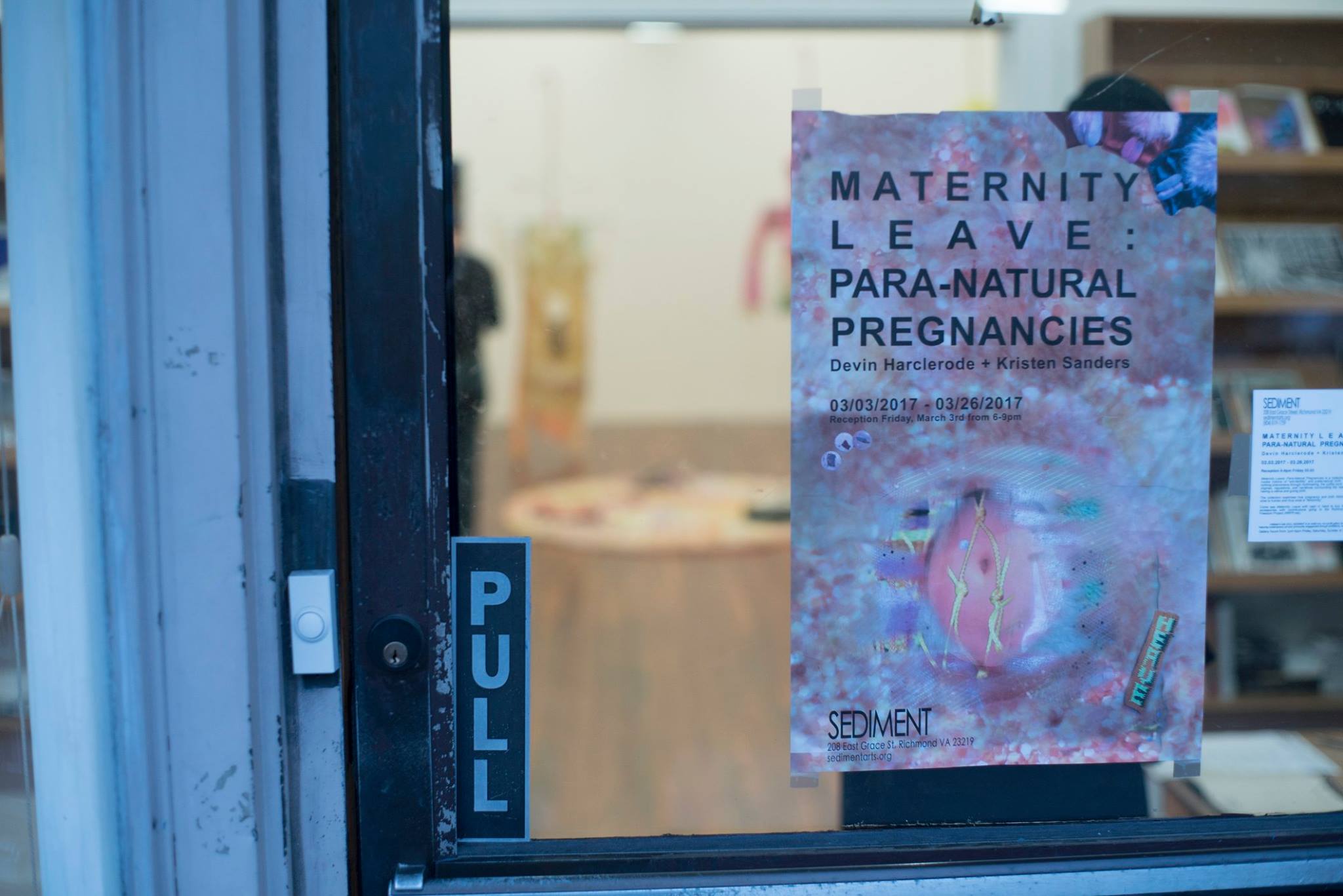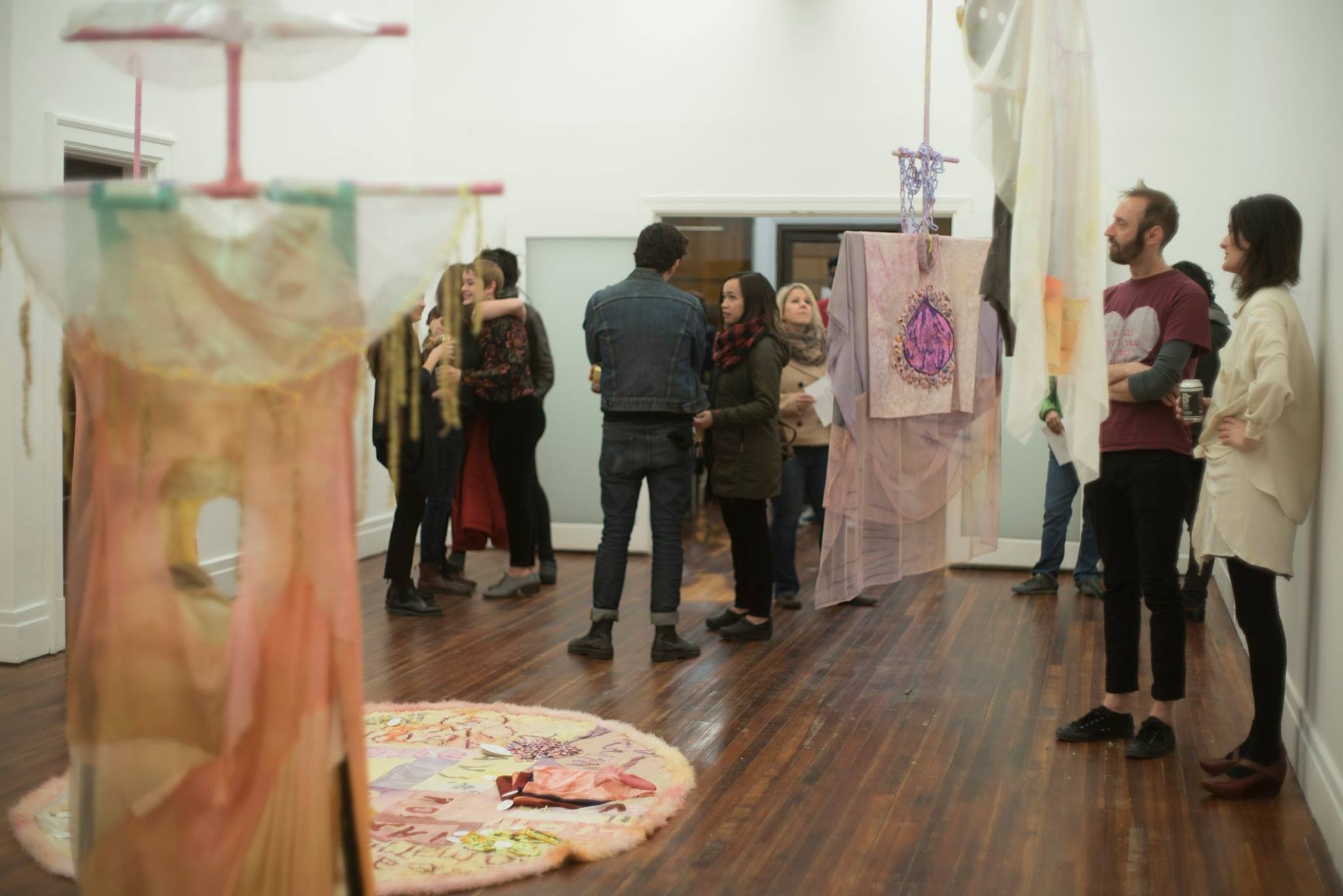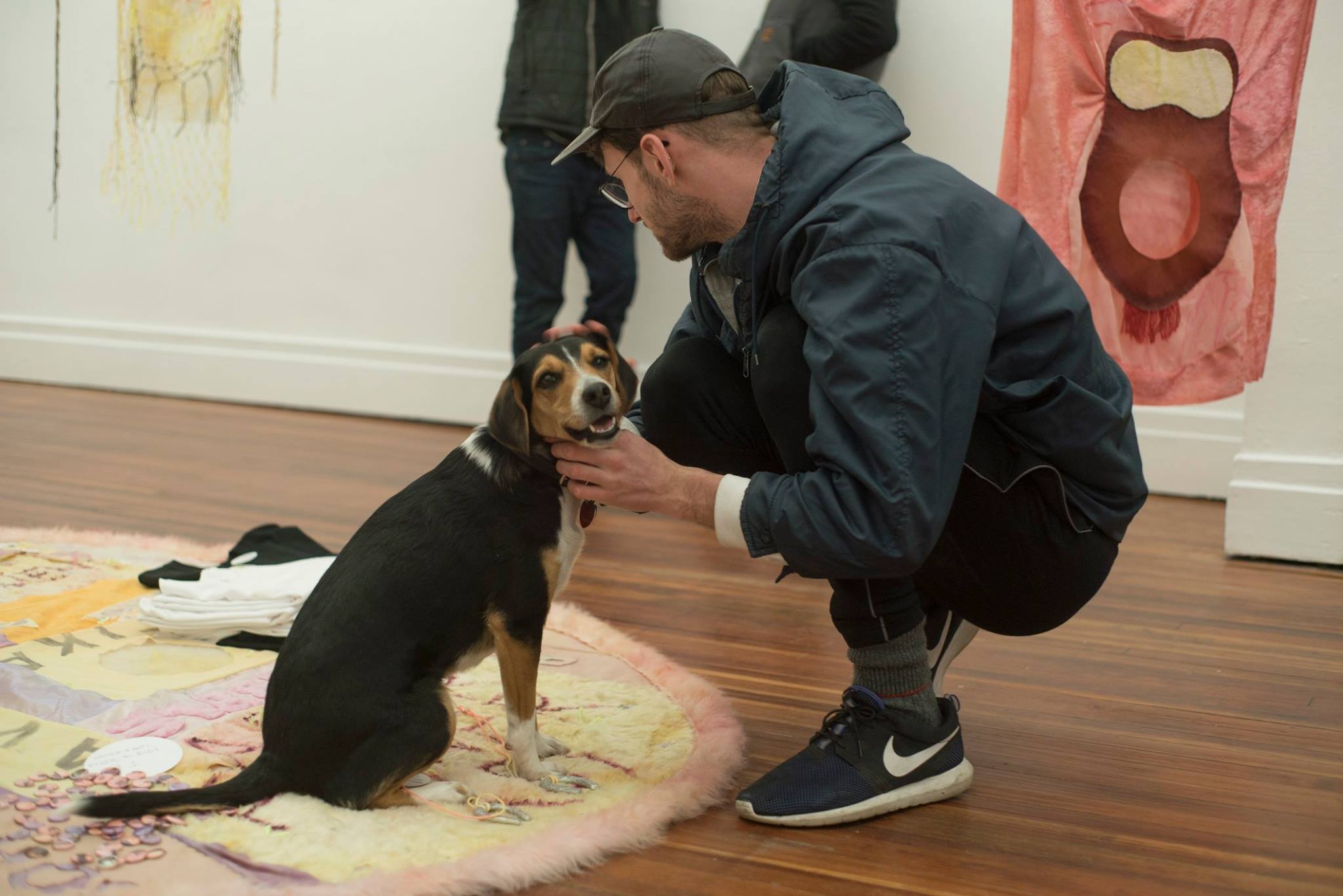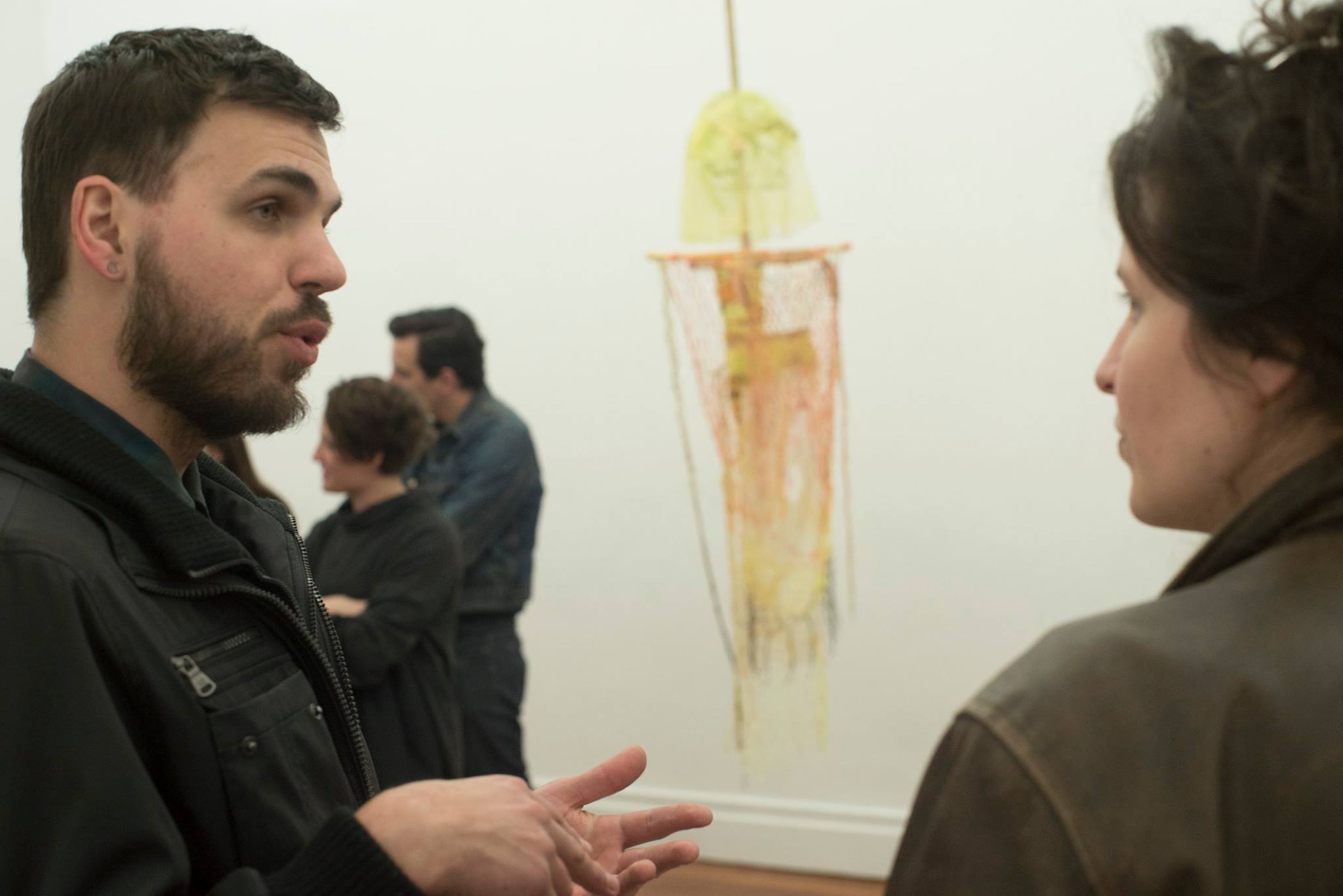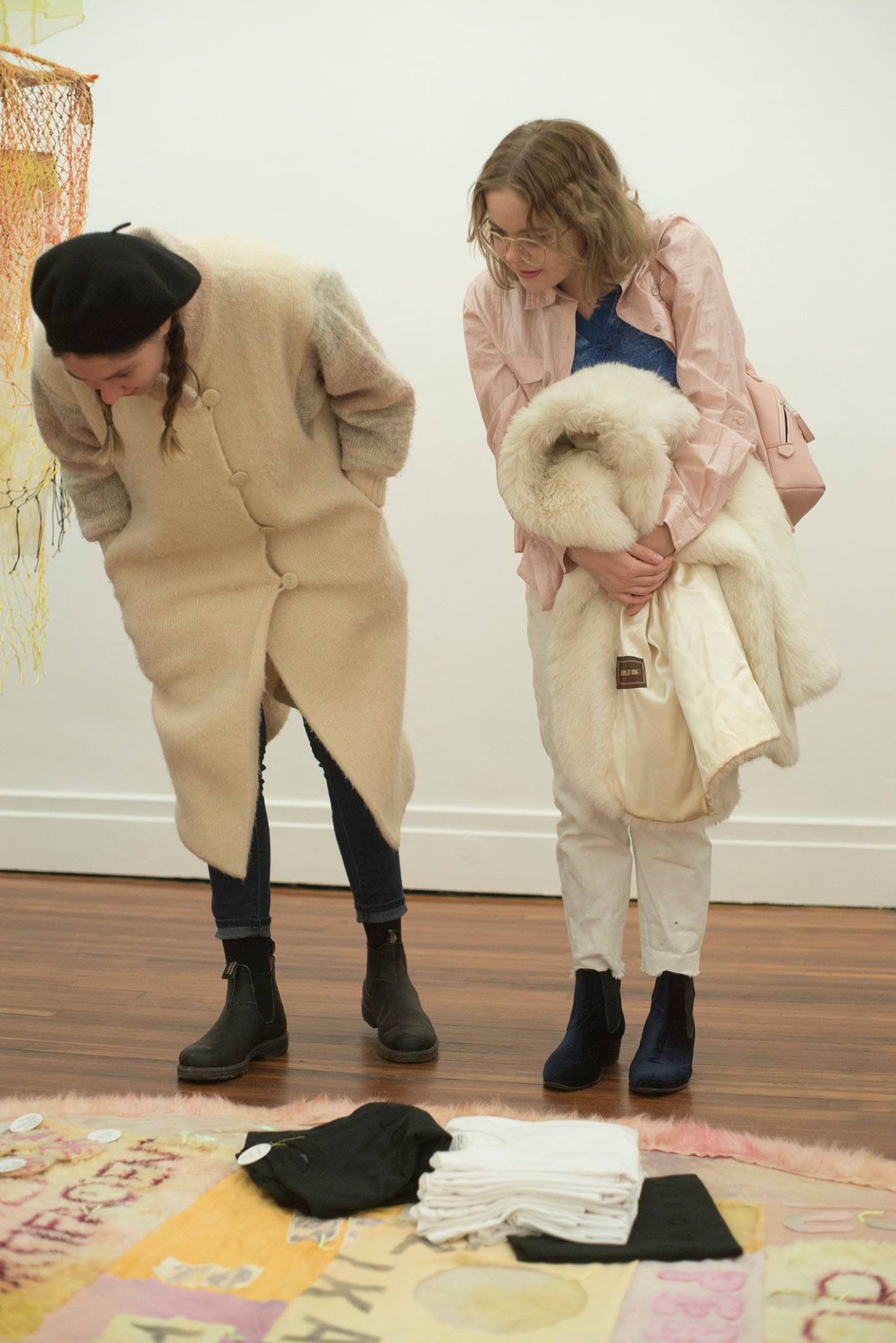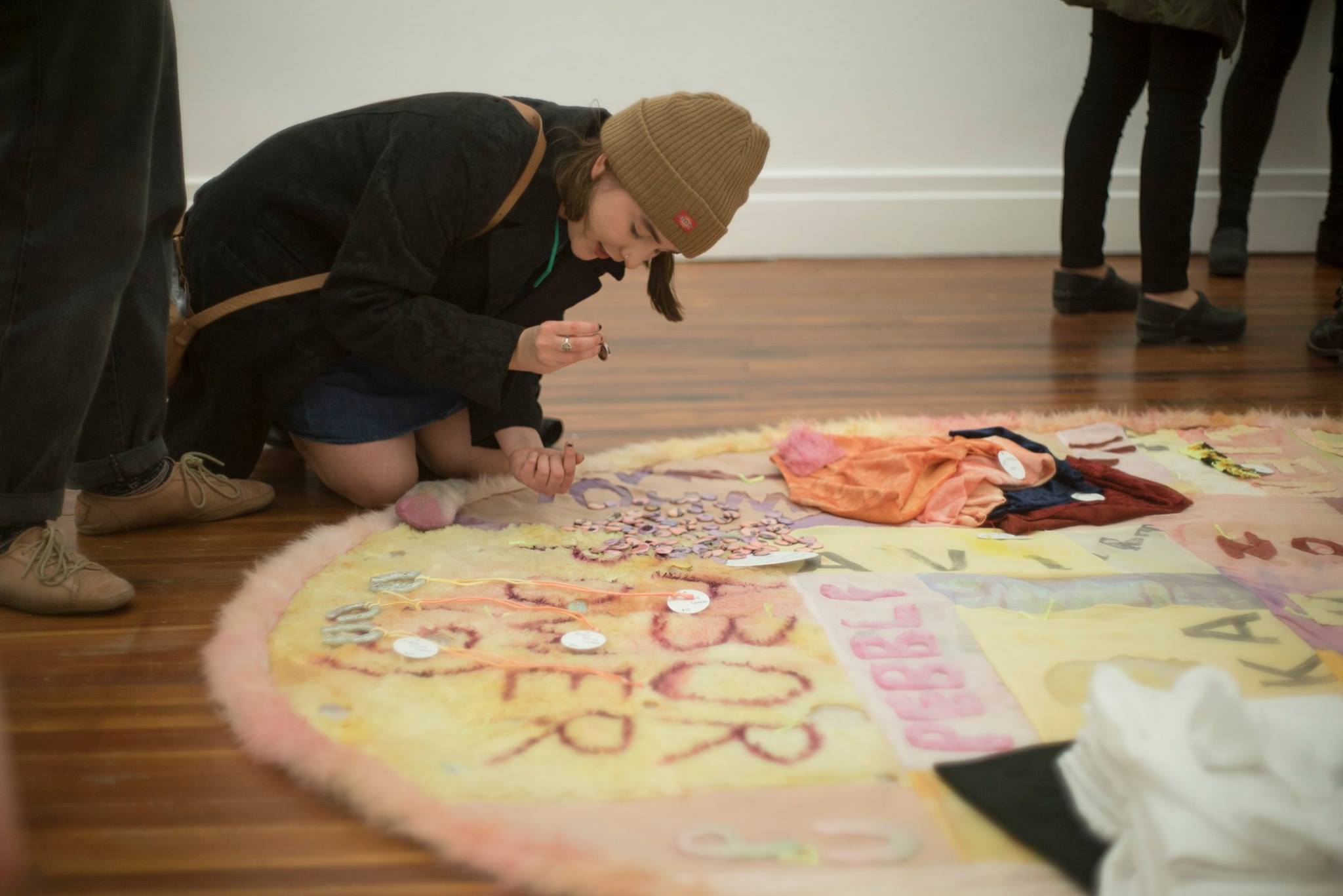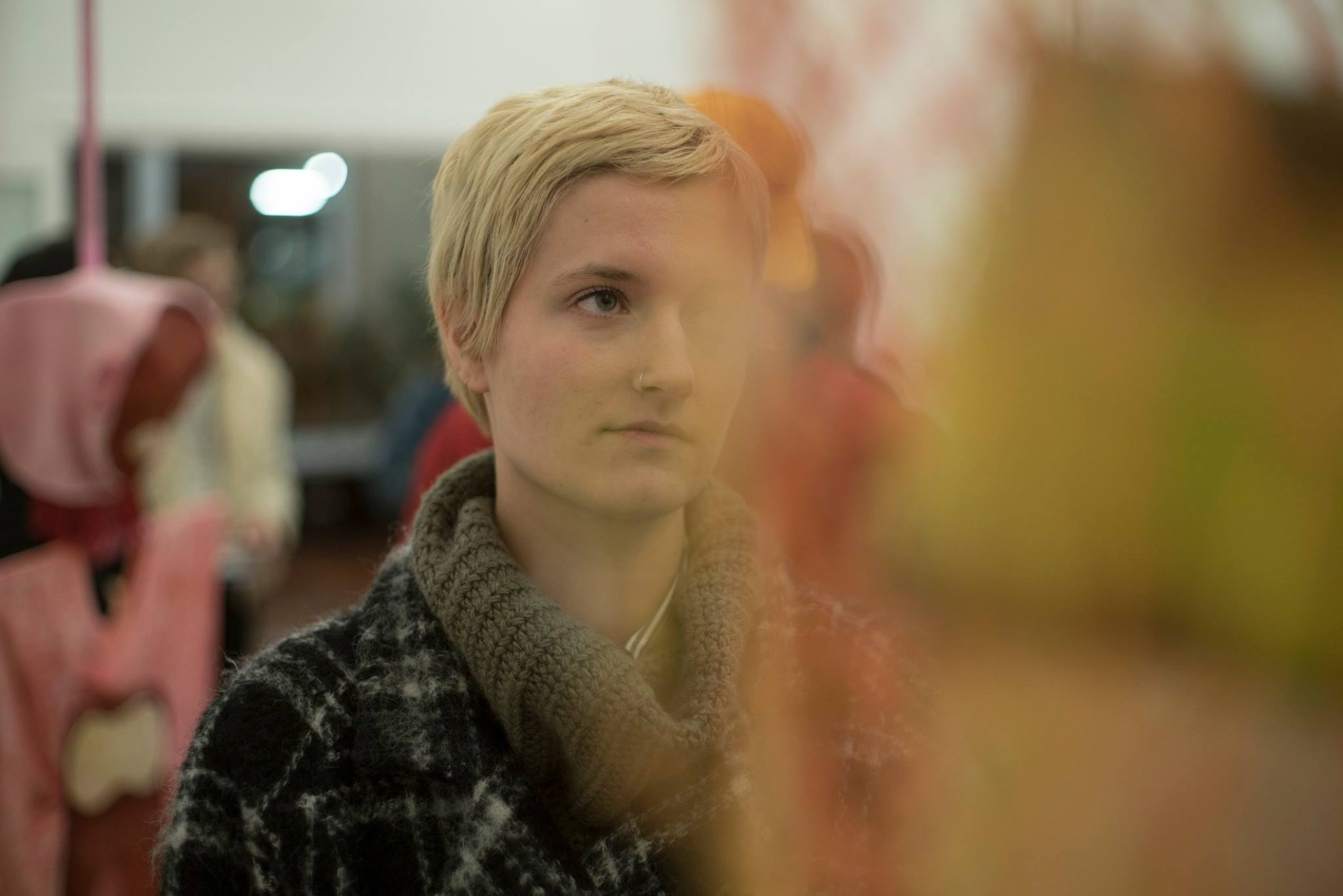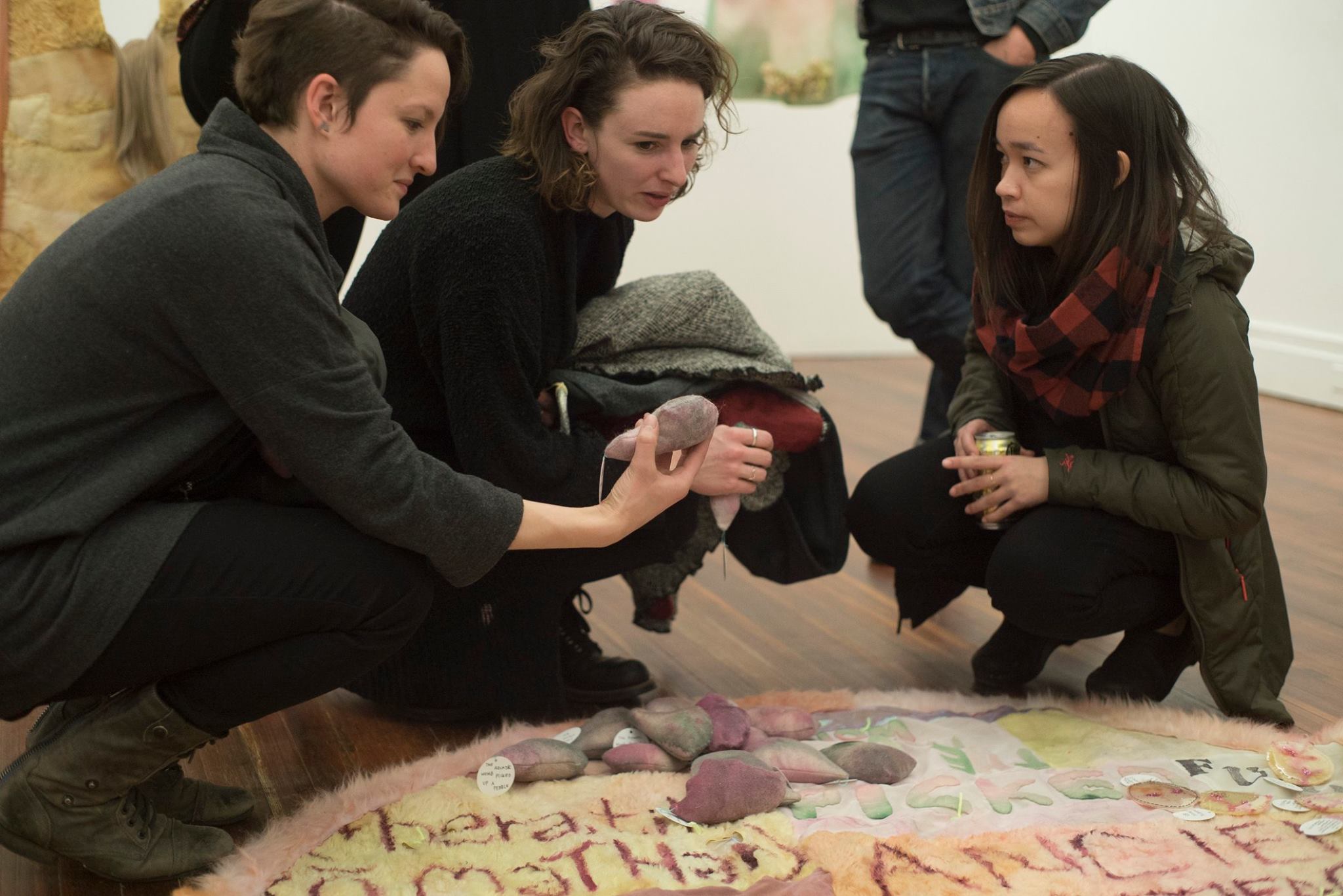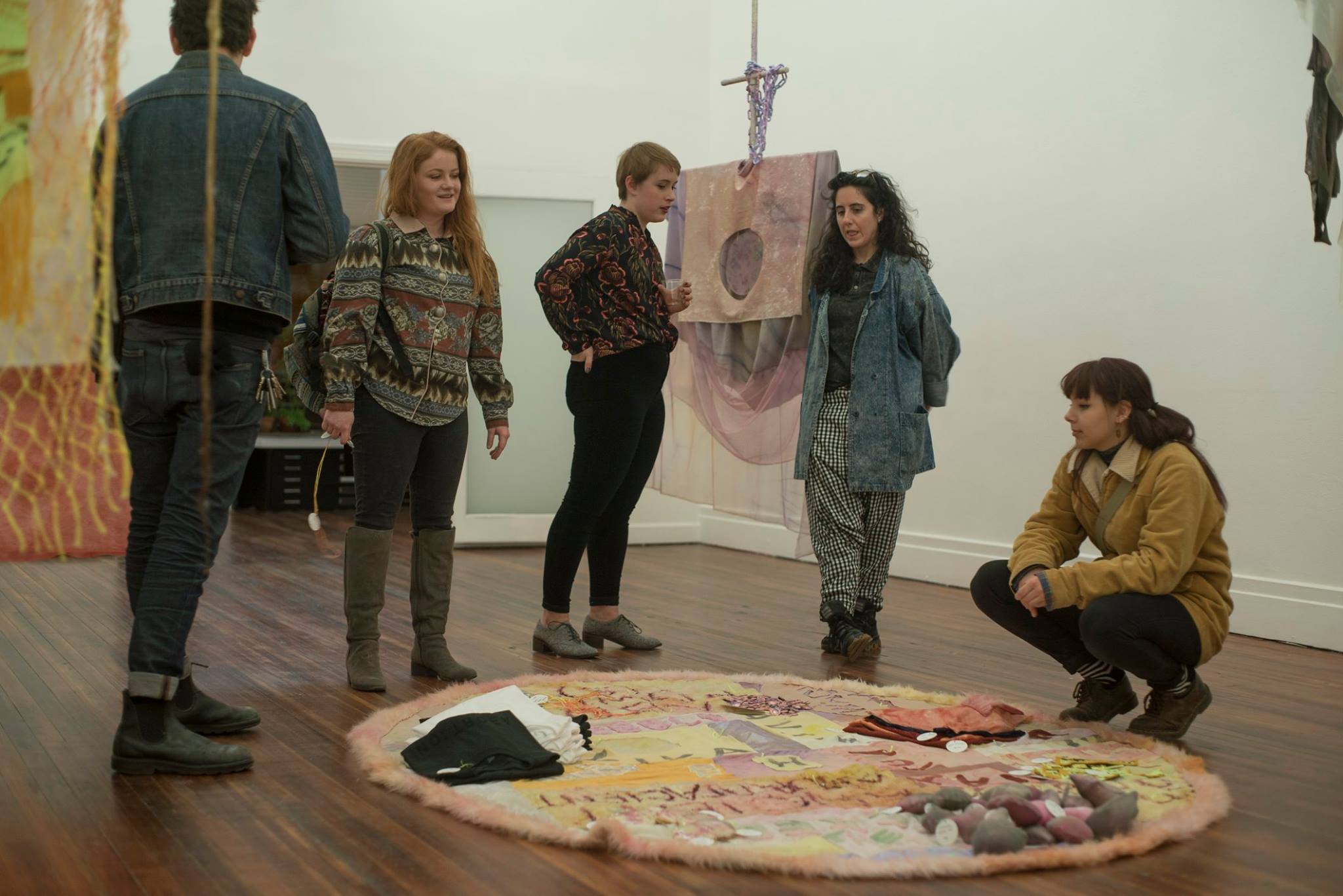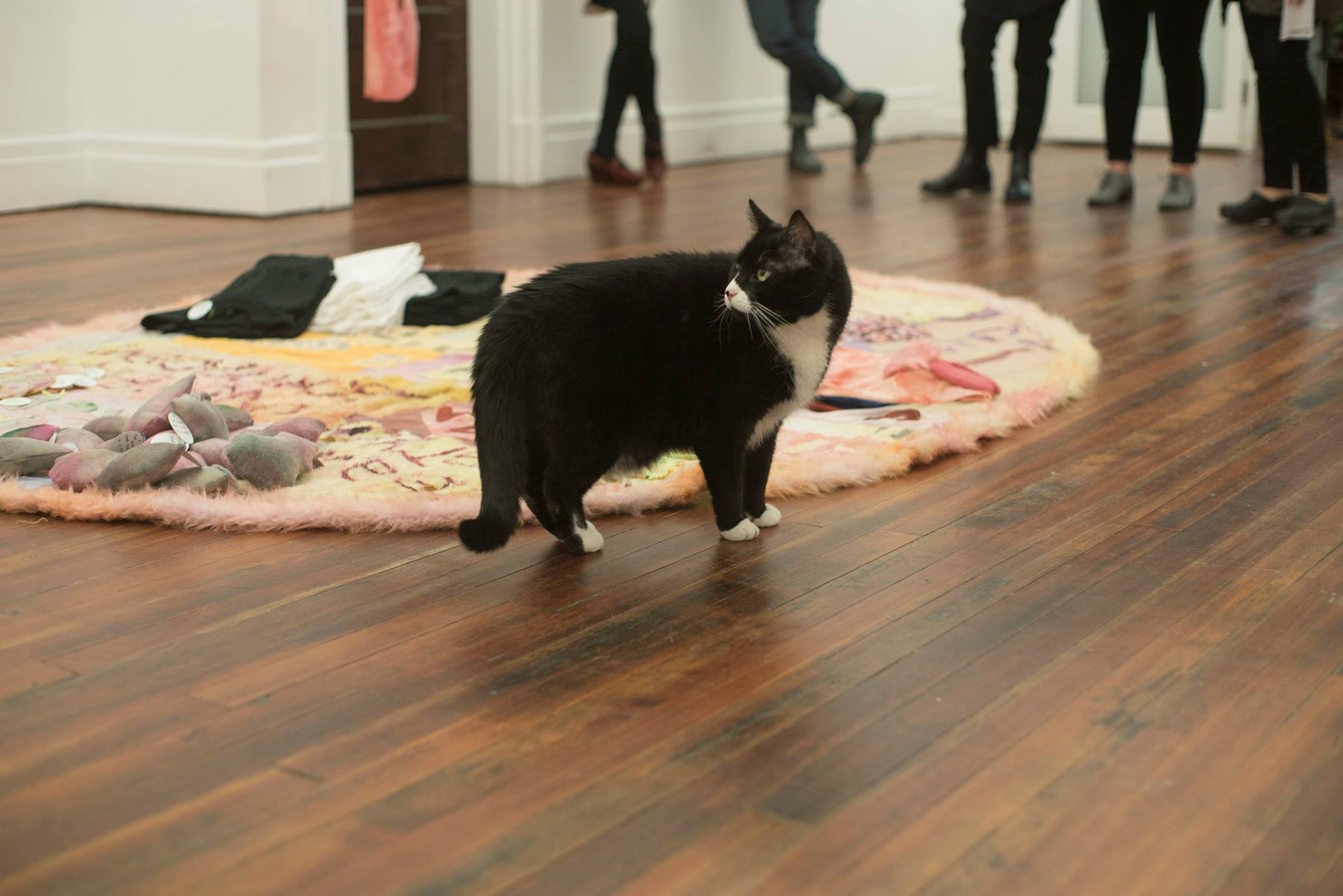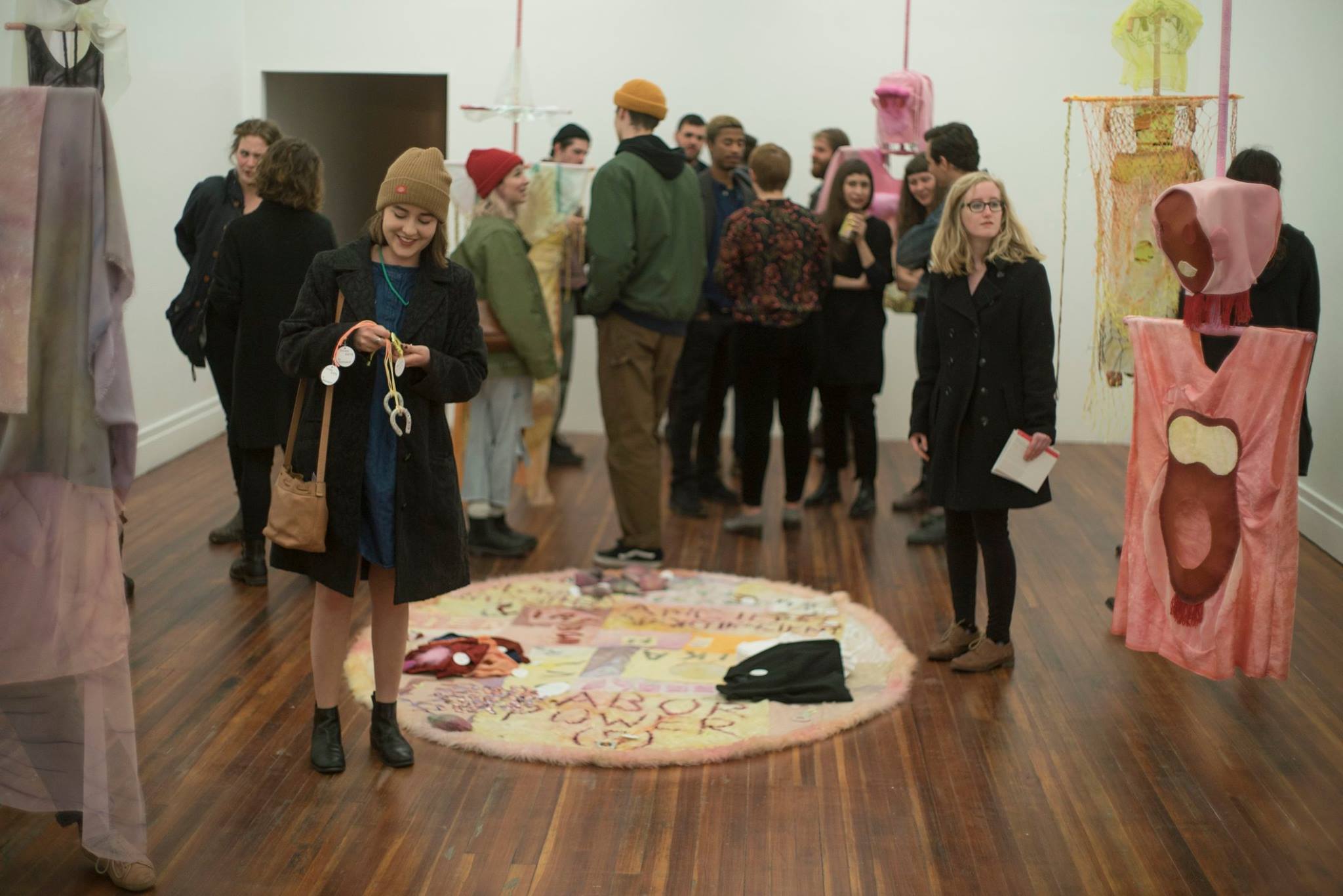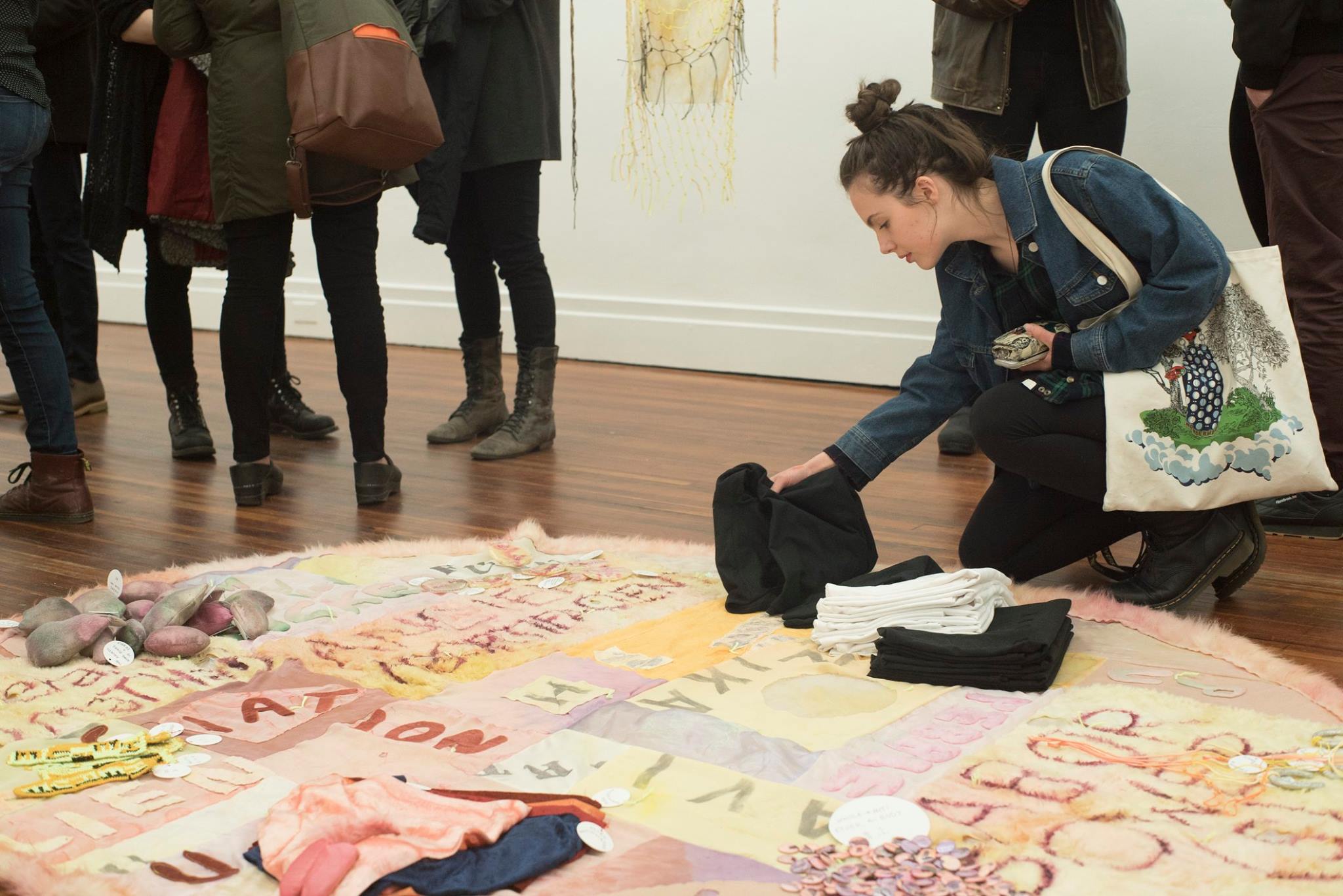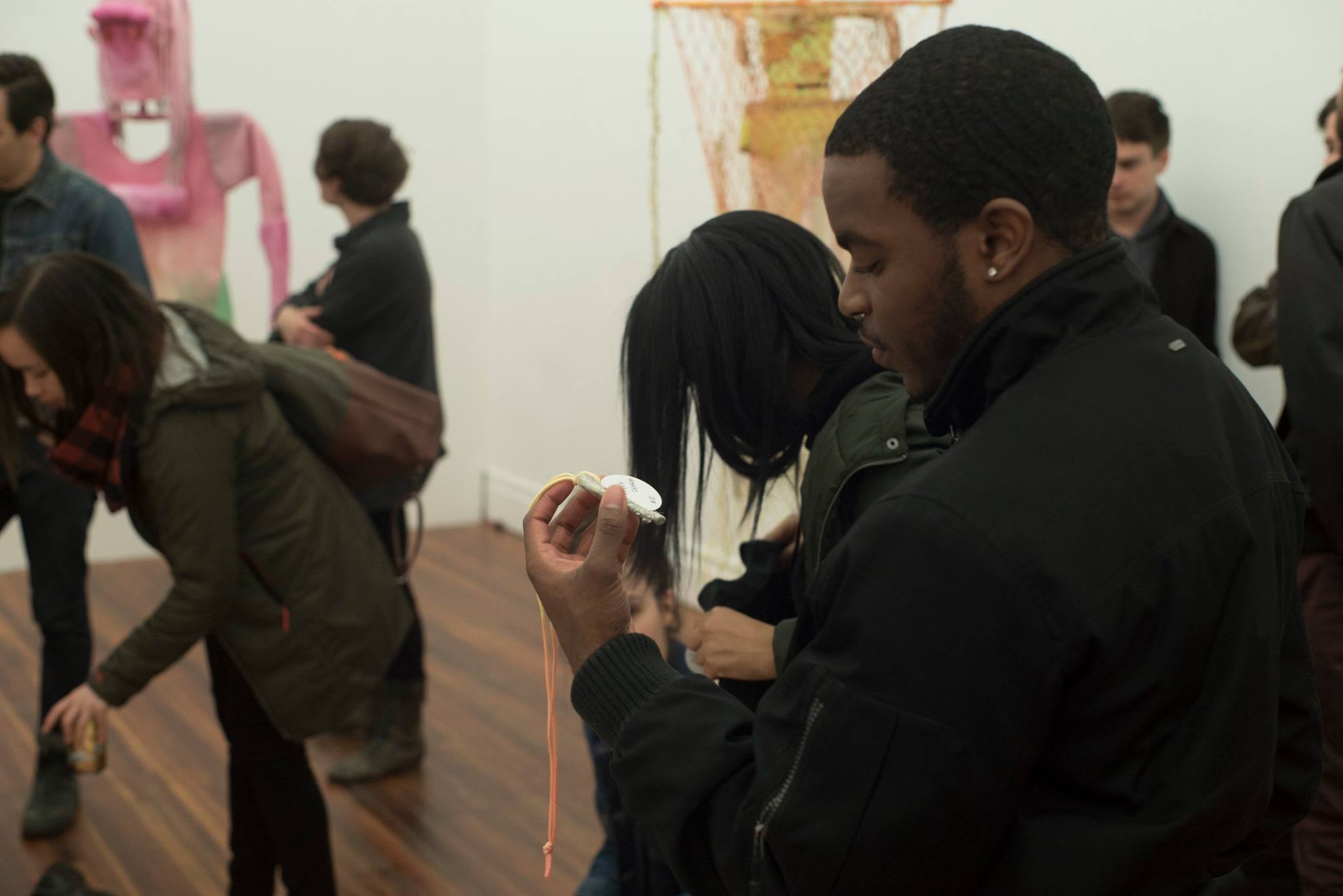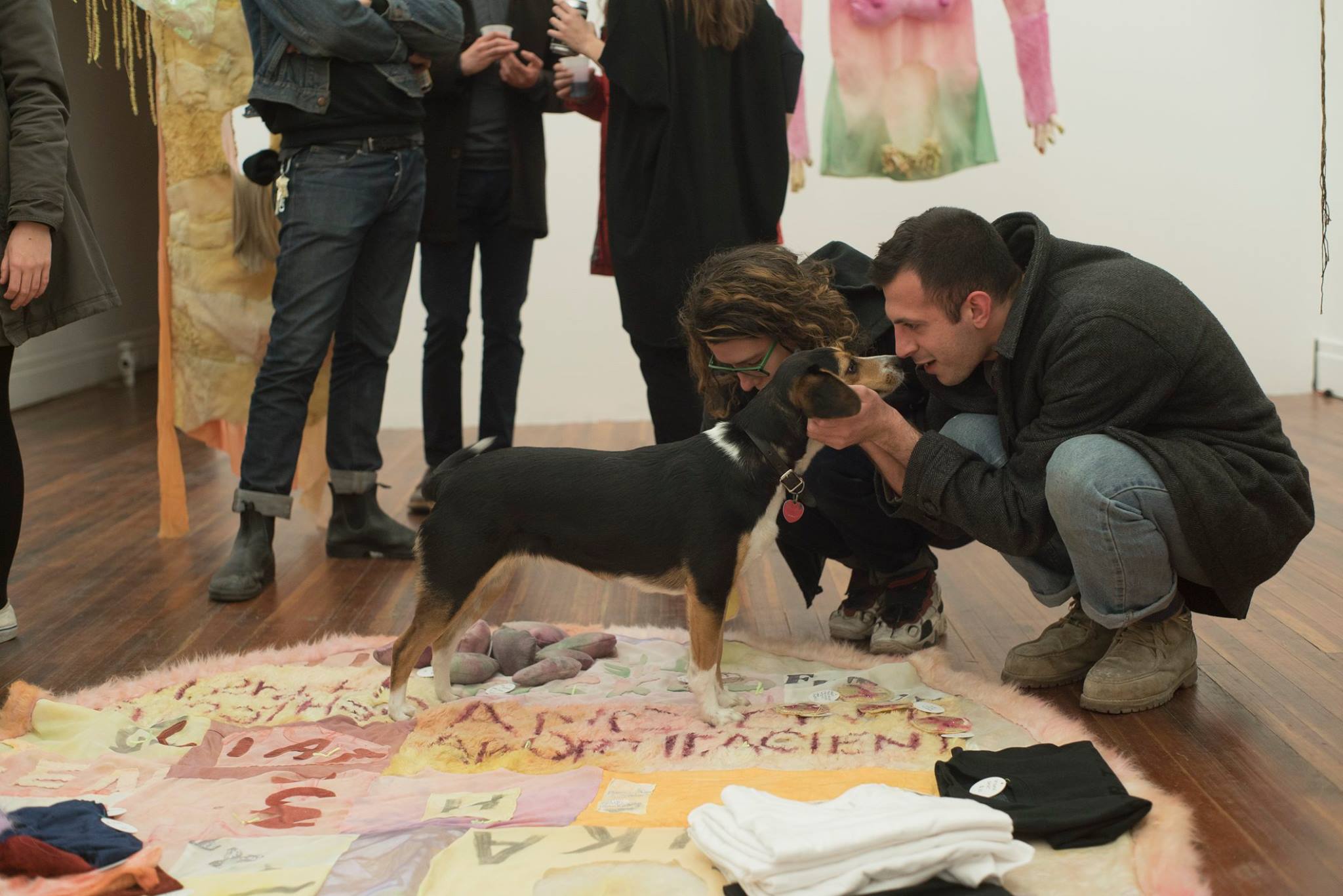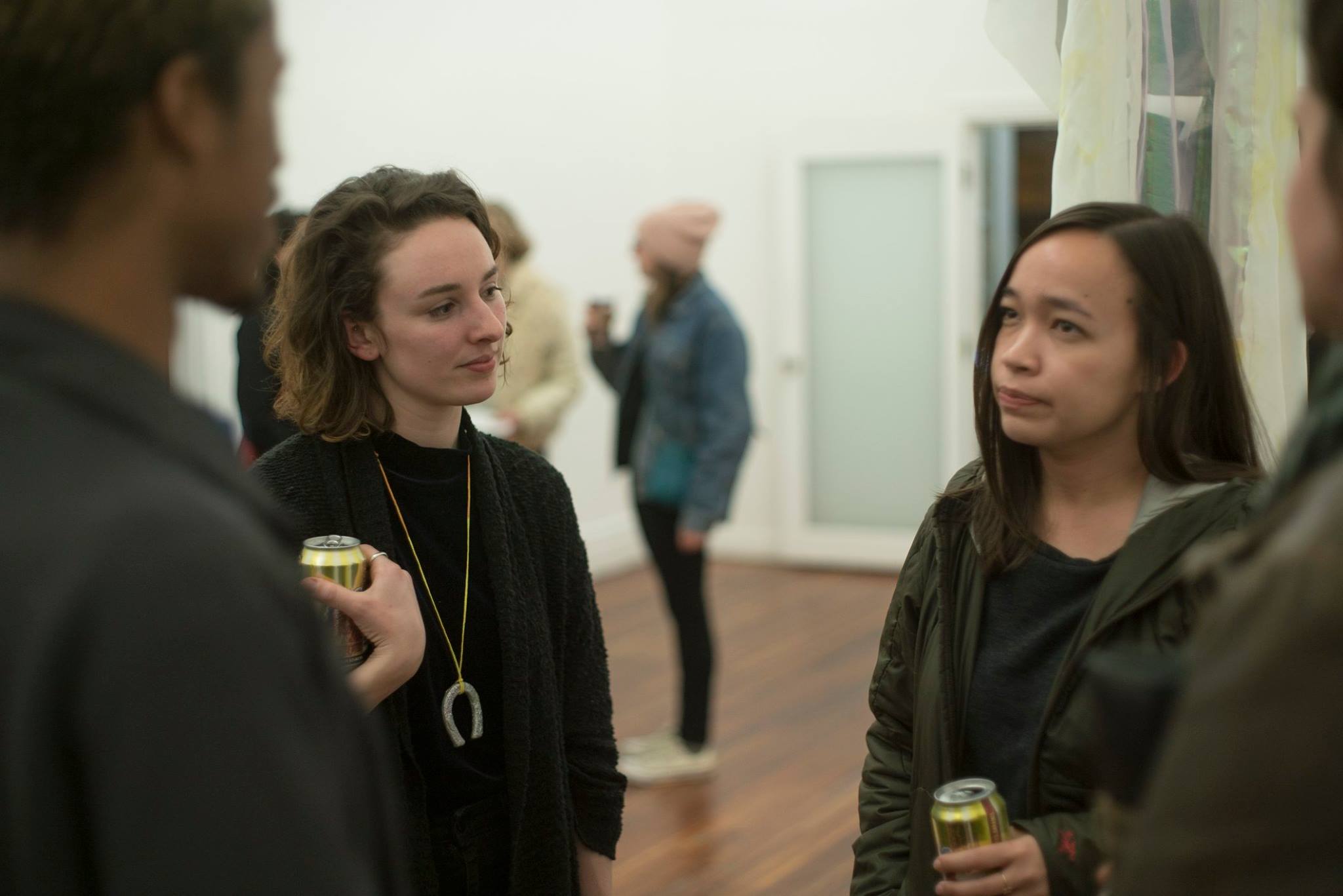MATERNITY LEAVE: PARA-NATURAL PREGNANCIES
Collaboration with Kristen SandersA collection of six suits, a quilt, and ready-to-wear items for $ that invoke notions of “anti-fertility” and preternatural birth. Exploring various birthing phenomena through myth-making, the outfits disintegrate the stigmas, regulations, and narratives surrounding the relationship between having a uterus and giving birth.
Calling attention to unpaid domestic and reproductive labor, the ready-to-wears were sold at Sediment with all cash going to the Richmond Reproductive Freedom Project.
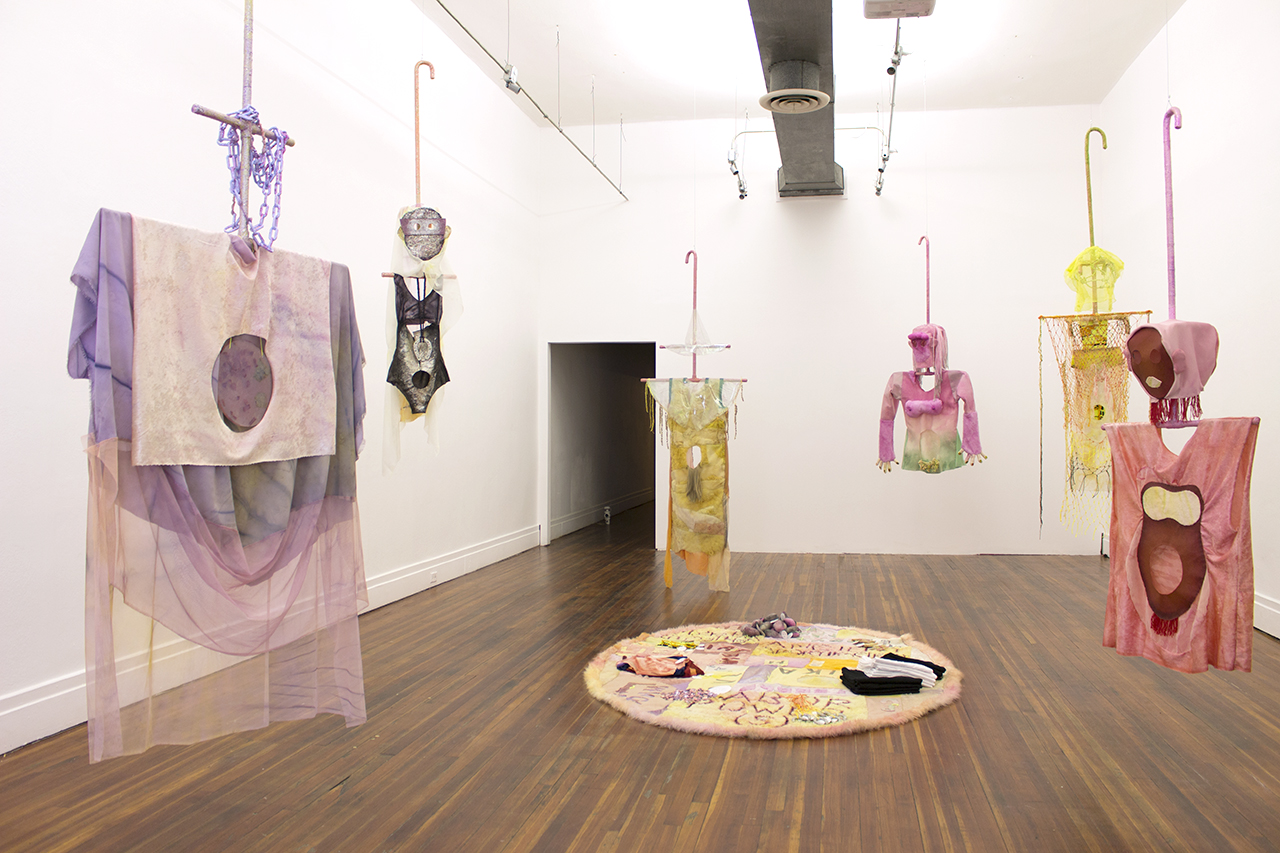

SUITS:
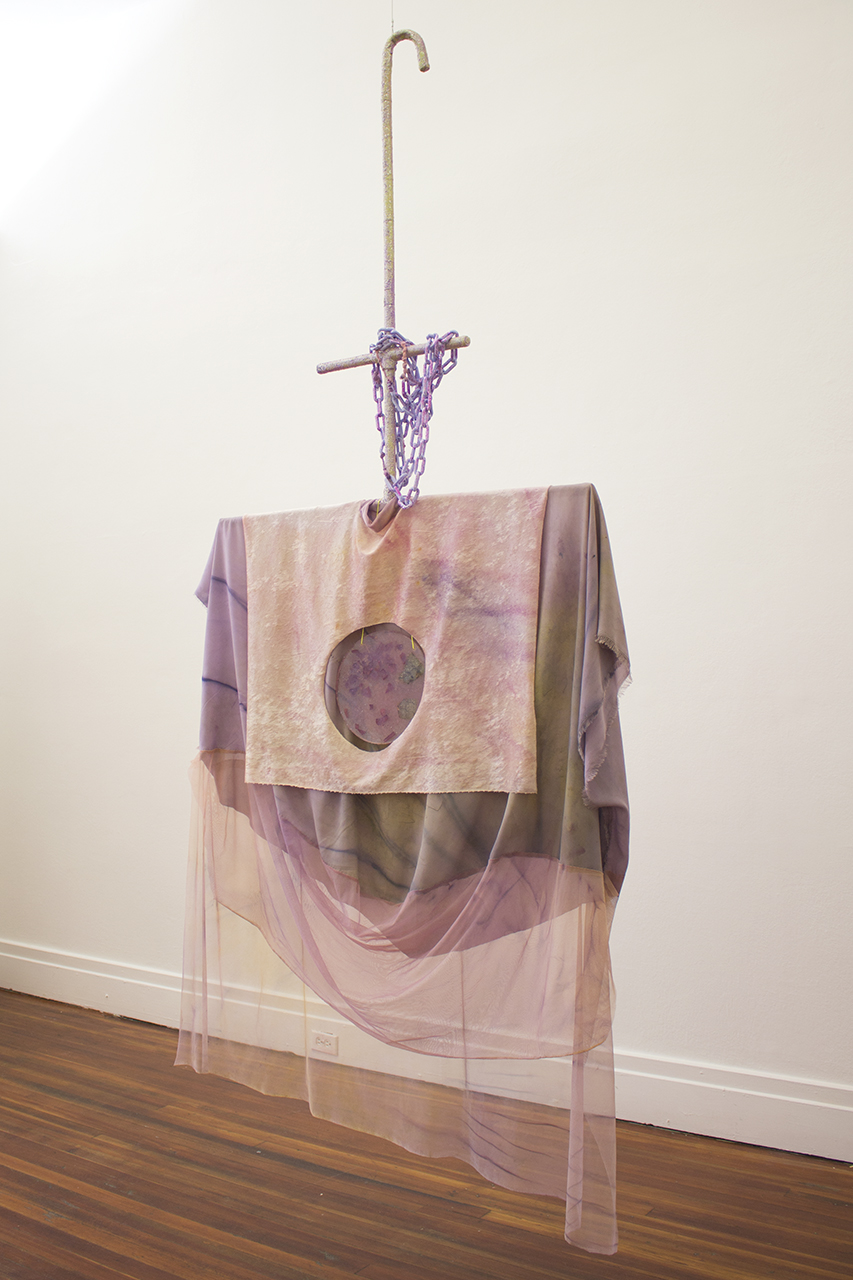
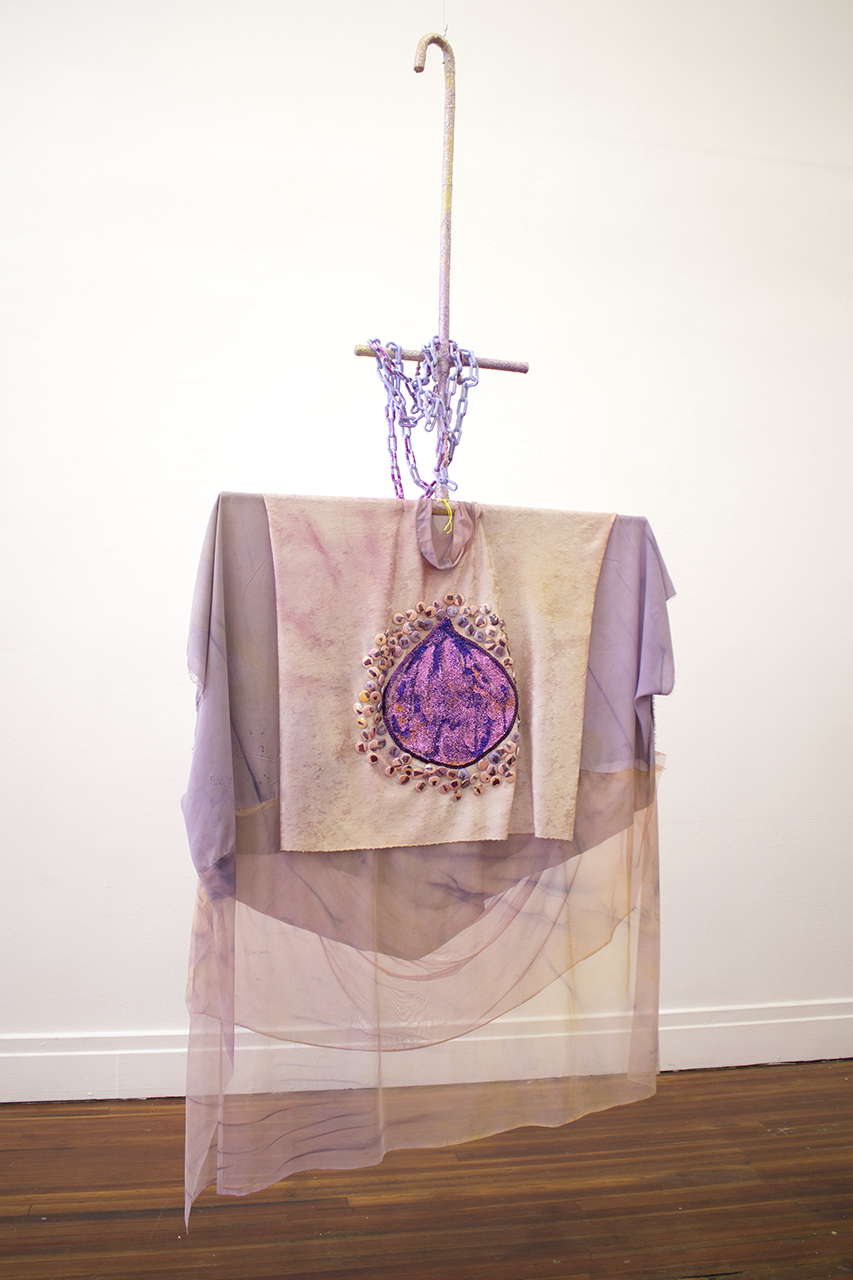
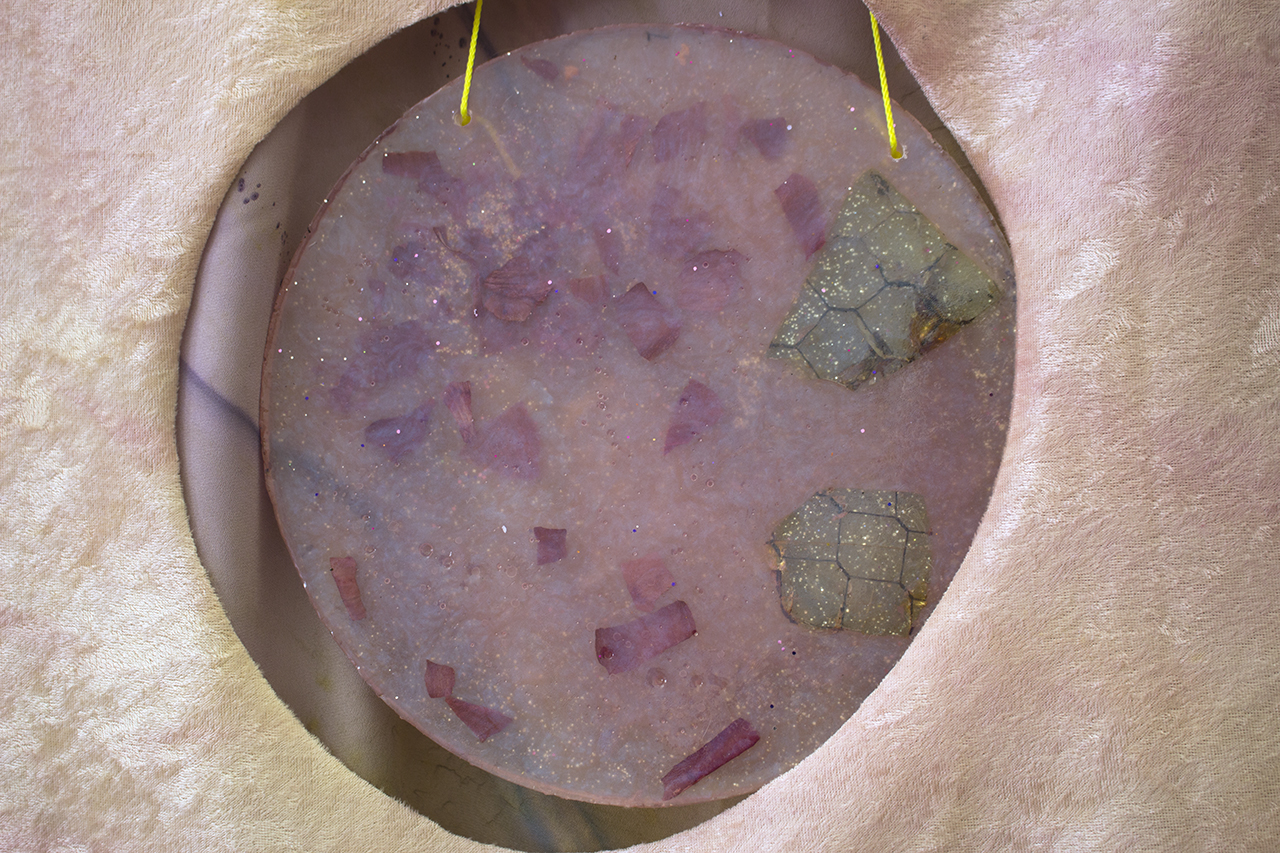
Anti Suit (by: Devin Harclerode)
An outfit to combat the relationship between wholeness and fertility. Hippocrates (often cited as “the father of medicine”) took inspiration from the Berlin Papyrus and associated fertility with now-salacious rituals (an onion was stashed in the vagina, if smelt on the breath – fertility was deemed in tact because the passage of the body was whole). The Anti Suit harnesses the smelly energy, a pope-robe to become the celestial onion, confusing the possibility of onion breath.
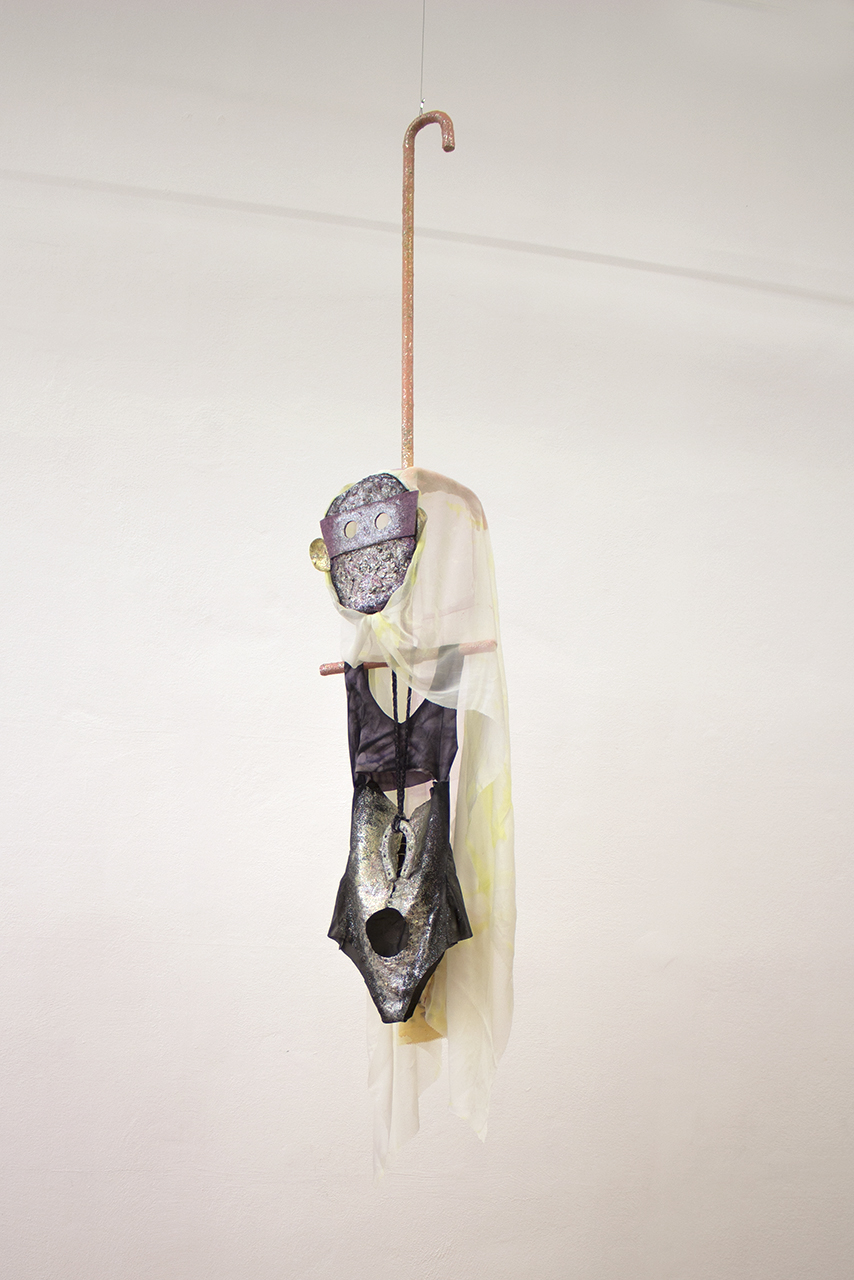
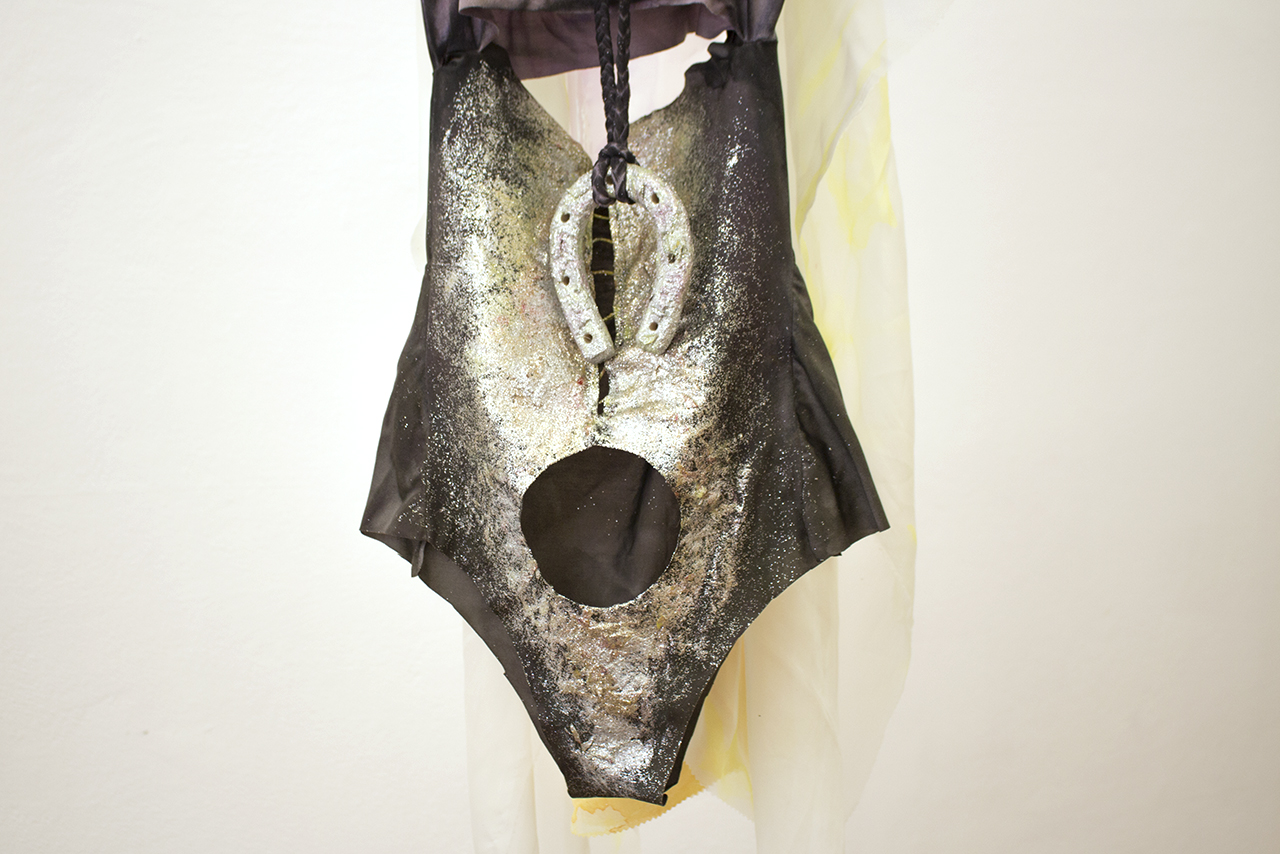
Future Suit (by: Kristen Sanders)
This bodysuit imagines a futuristic and sentient robot, for whom birthing is an assembly of parts rather than a gestation and delivery. The veil is both anti-bridal and anti-divine, repurposed to describe the robot as a maker and creator. The horseshoe, extracted from Monique Wittig’s Les Guérillères, envisions the shape of a robot vulva and is worn as a pendant to celebrate fabrication and invention.
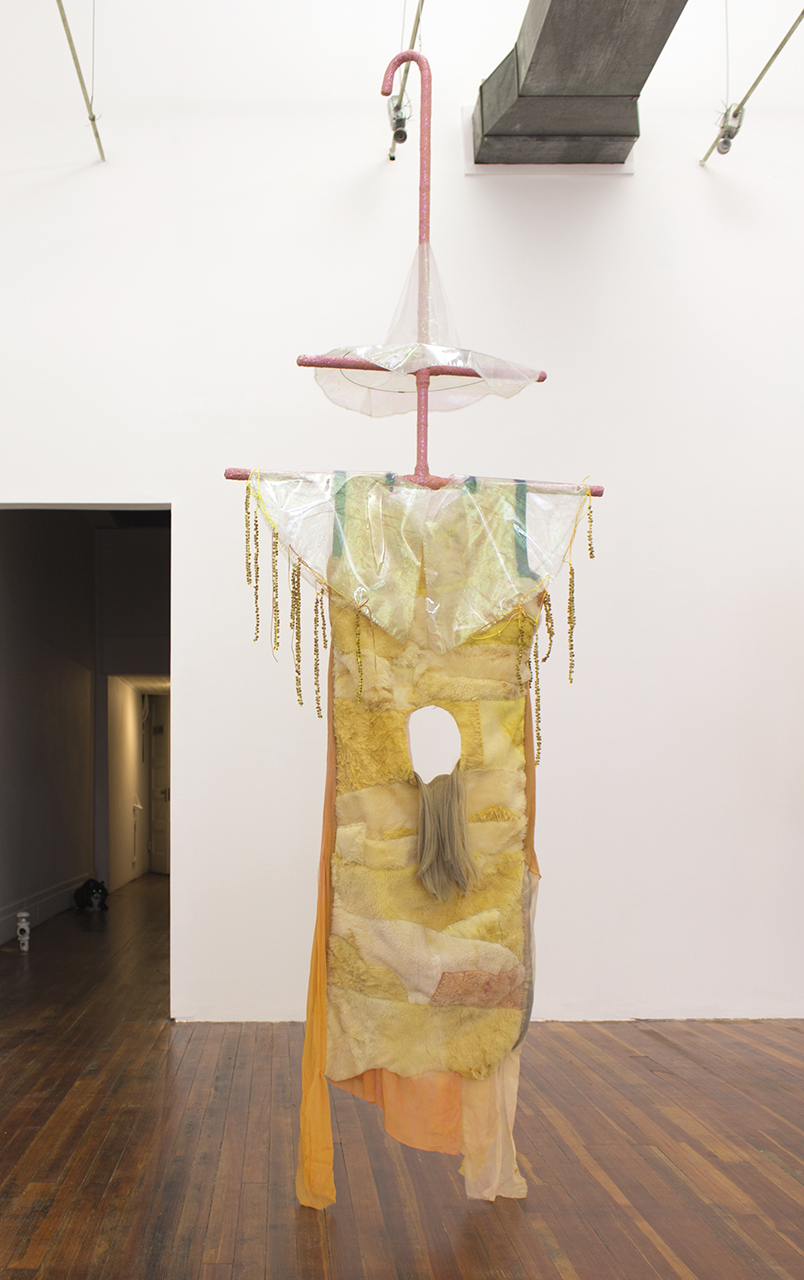
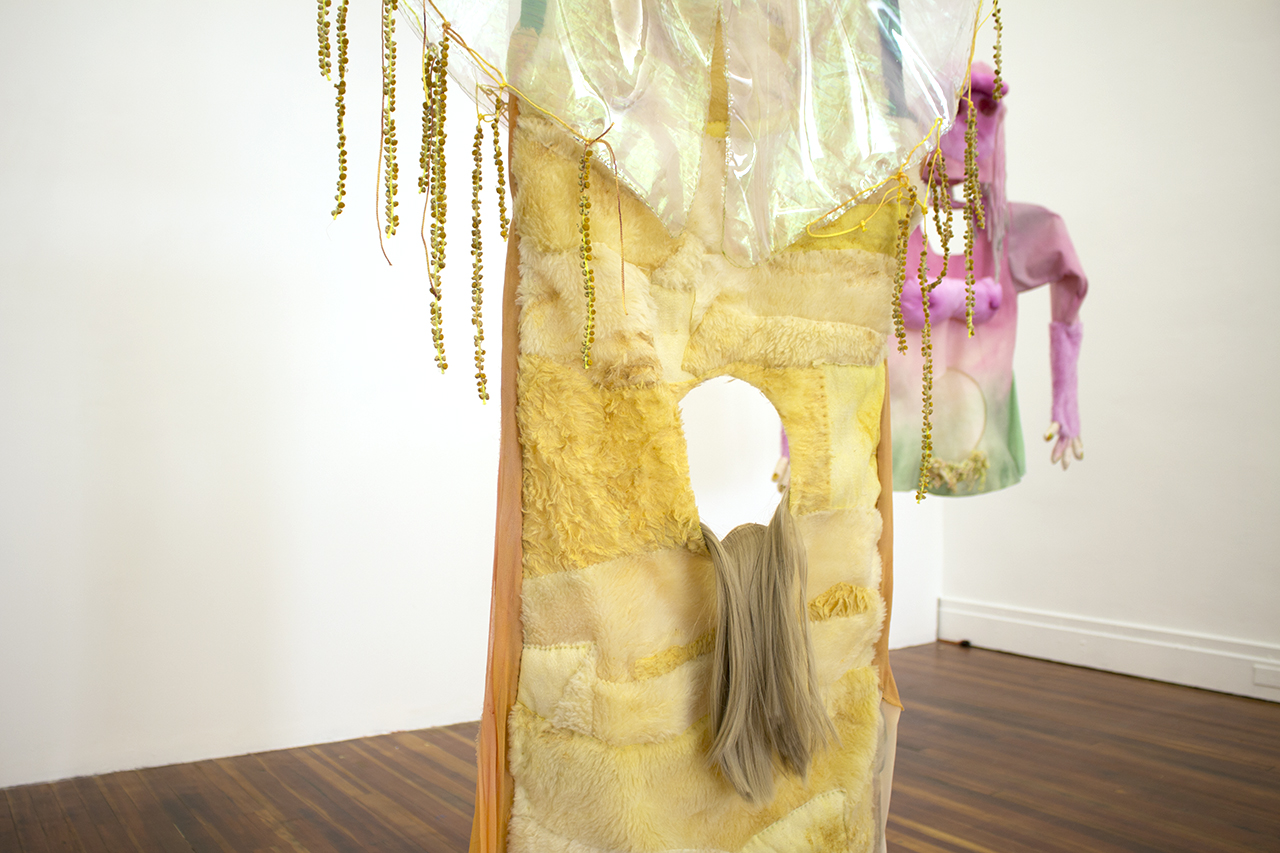
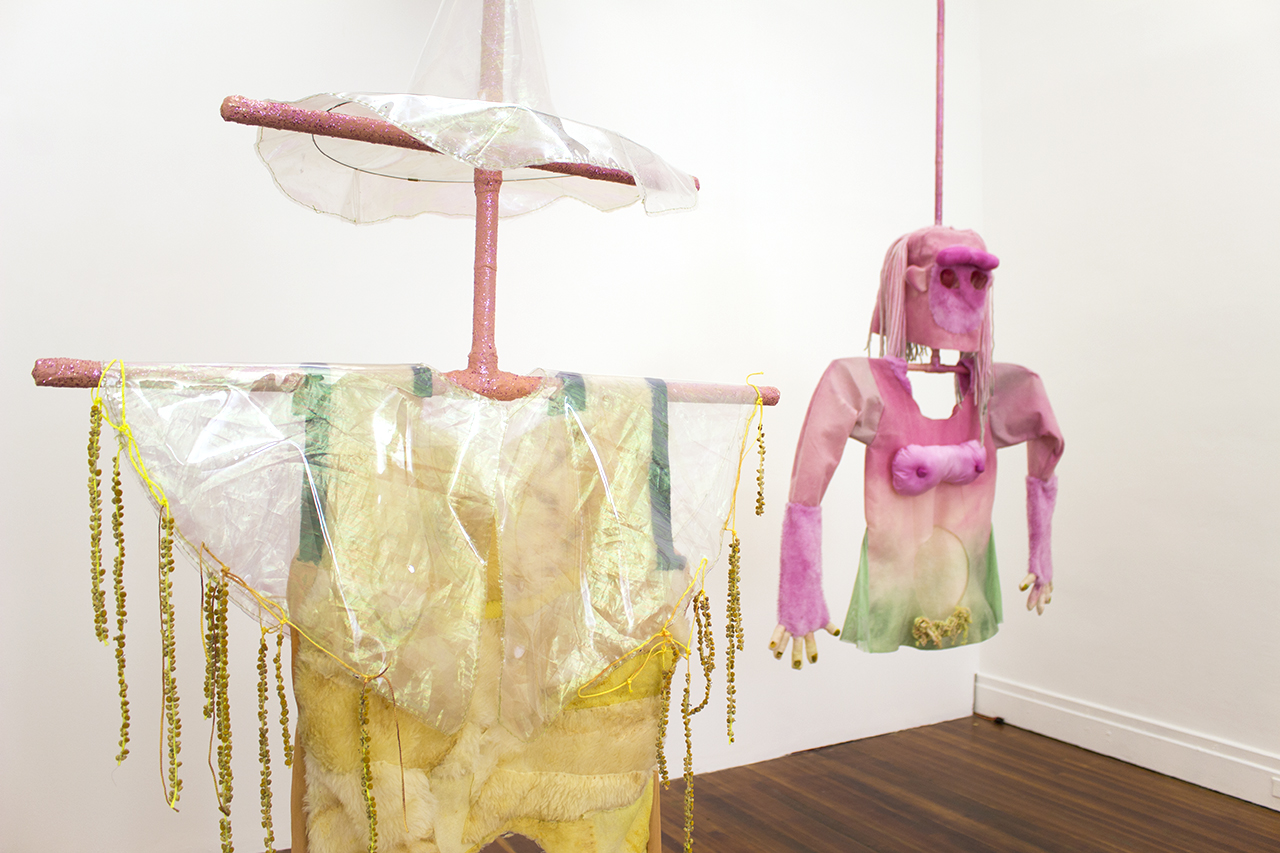
Heretic Suit (by: Devin Harclerode)
The Heretic Suit is an invocation of the witch symbol – the witch who was first punished by a capitalist co-option of reproductive labor, for attempting to retain autonomy. The pilgrim dress code is shifted from morality to give power to saffron and iridescent camouflage. Cords of tansy bulbs protect the wearer, a reminder of a natural abortifacient that is gifted by the weather rather than the system.
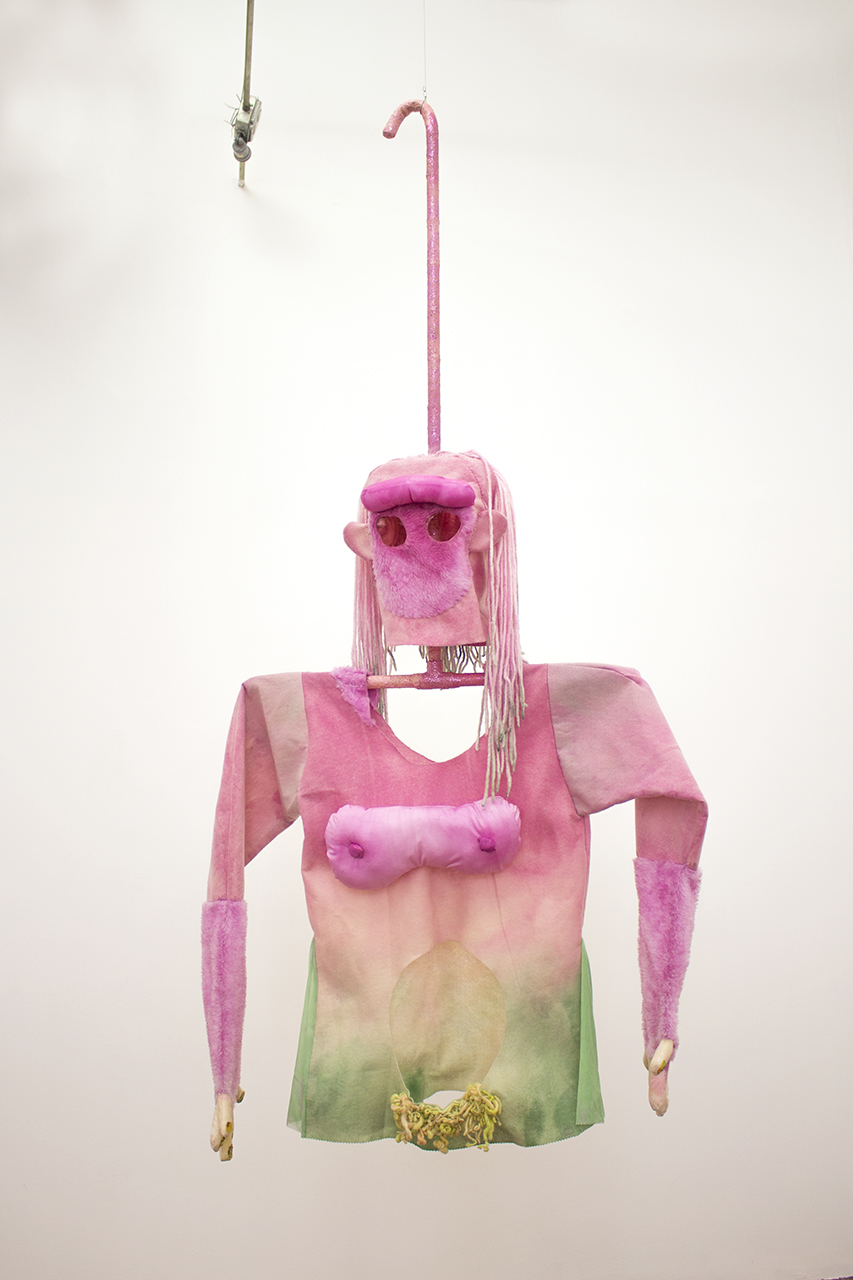
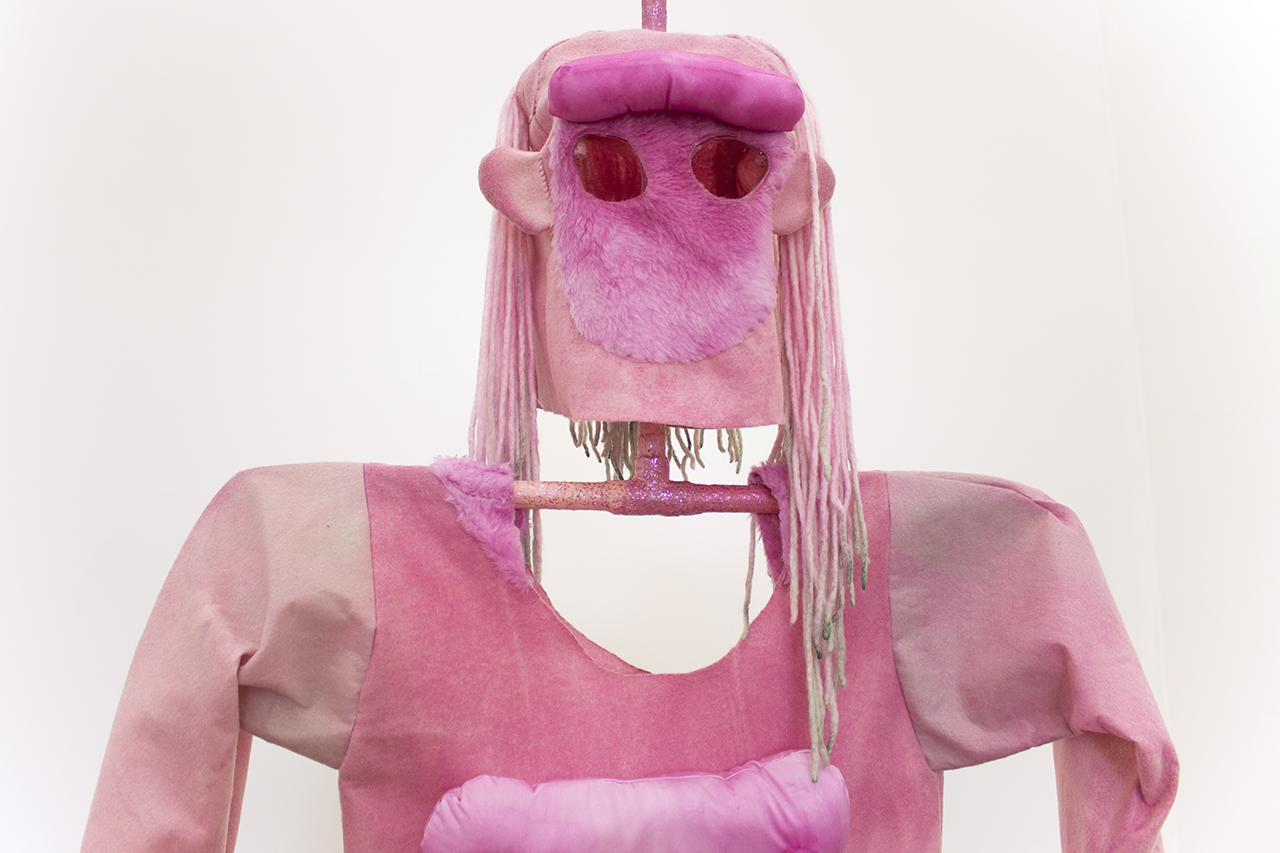
Aquatic Suit (by: Kristen Sanders)
The Aquatic suit embodies the character of a prehistoric hominid with a semi-aquatic lifestyle who, some several million years ago, used the first stone tool. The open stomach reveals its watery womb and its long head hair provides its infant something secure to grasp onto while floating in the waves. This character counters the assertions of past anthropologists that only male hominids were capable of important inventions because maternity was deemed incompatible with discovery.

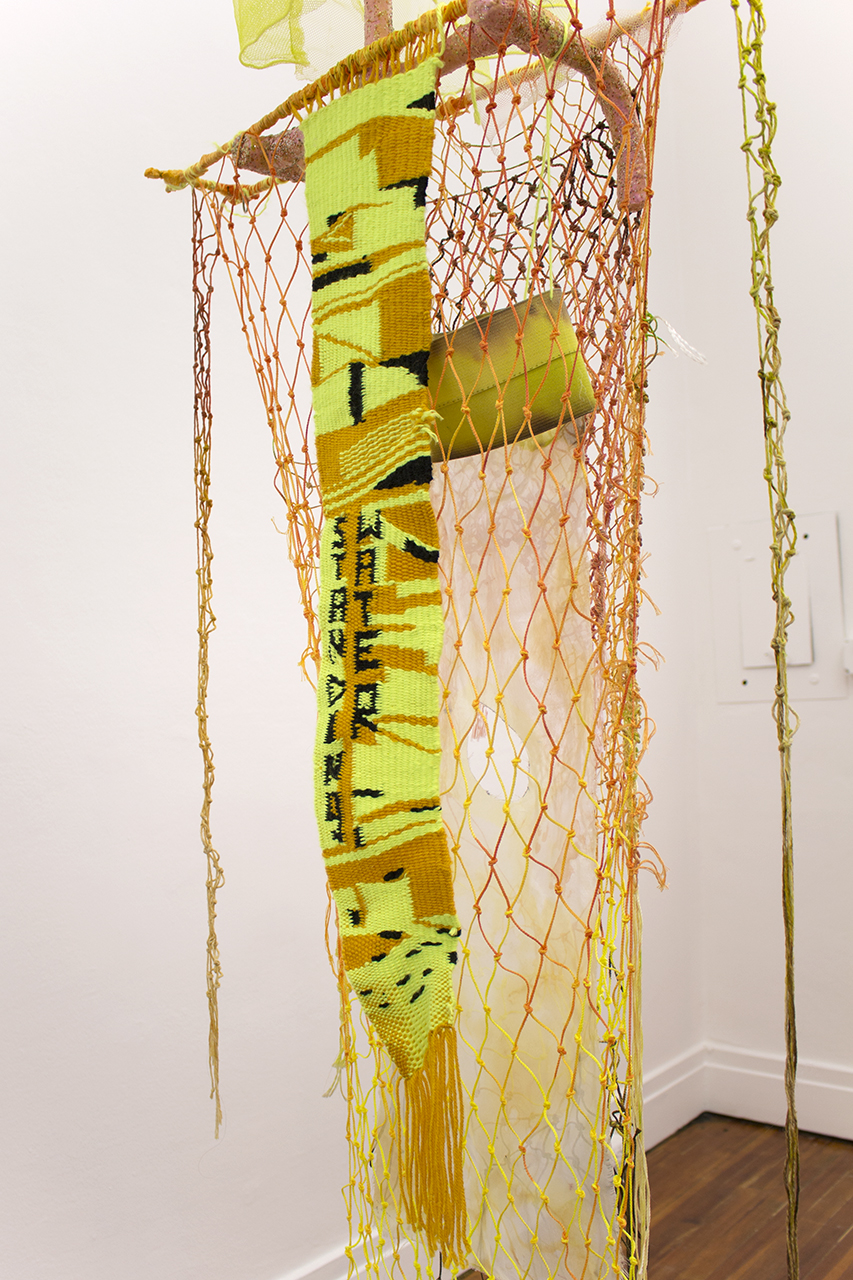
Heave Suit (by: Devin Harclerode)
The Heave Suit references the Zika virus phenomena. Made of nets, signifying the mosquito net and chainmail, with gaps large enough to allow the mosquito entrance. Interested in the idea of “holes” and “safety” the suit gives power to zika-borne anti-fertility. Agitating the abortion-stigma, the nets catch rather than repel, using the verb “ to heave” to retch a sigh of pregnancy relief.
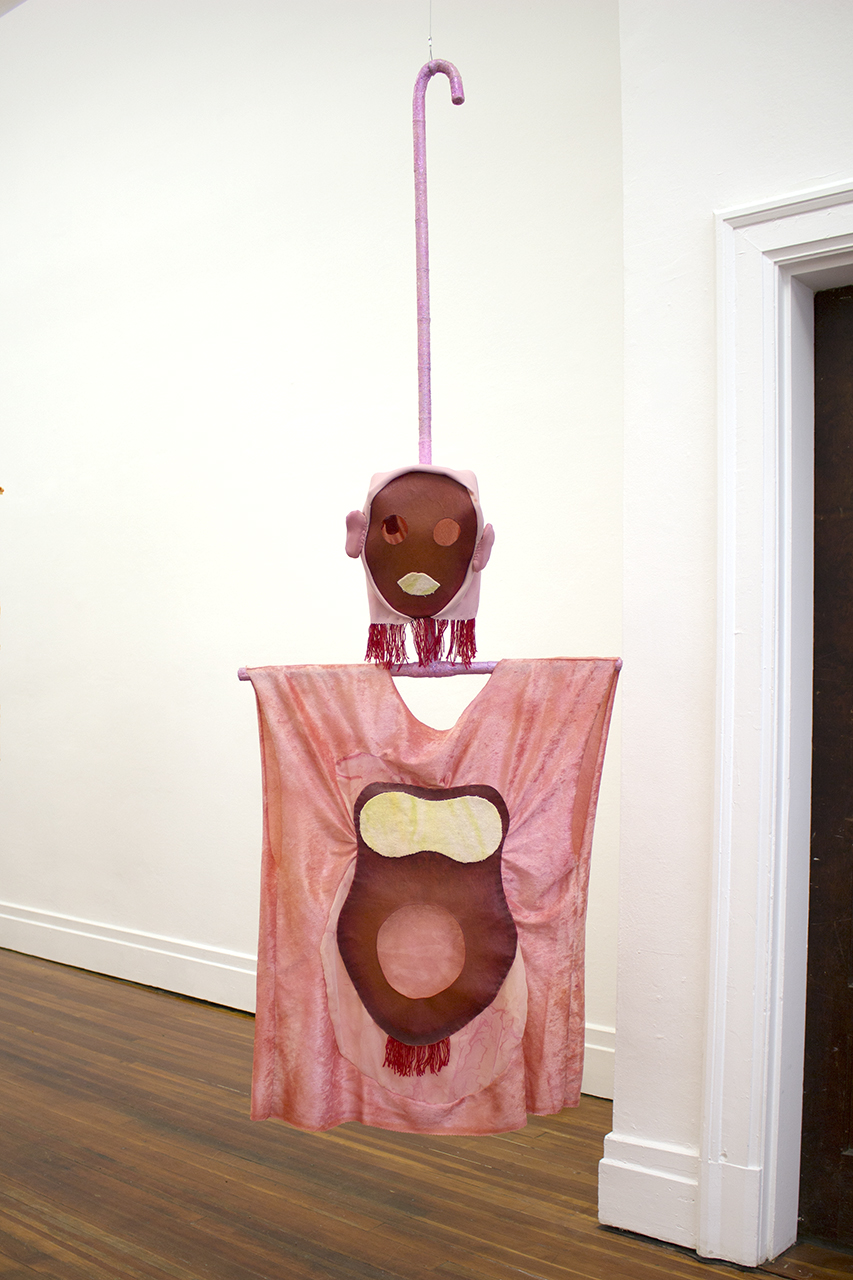
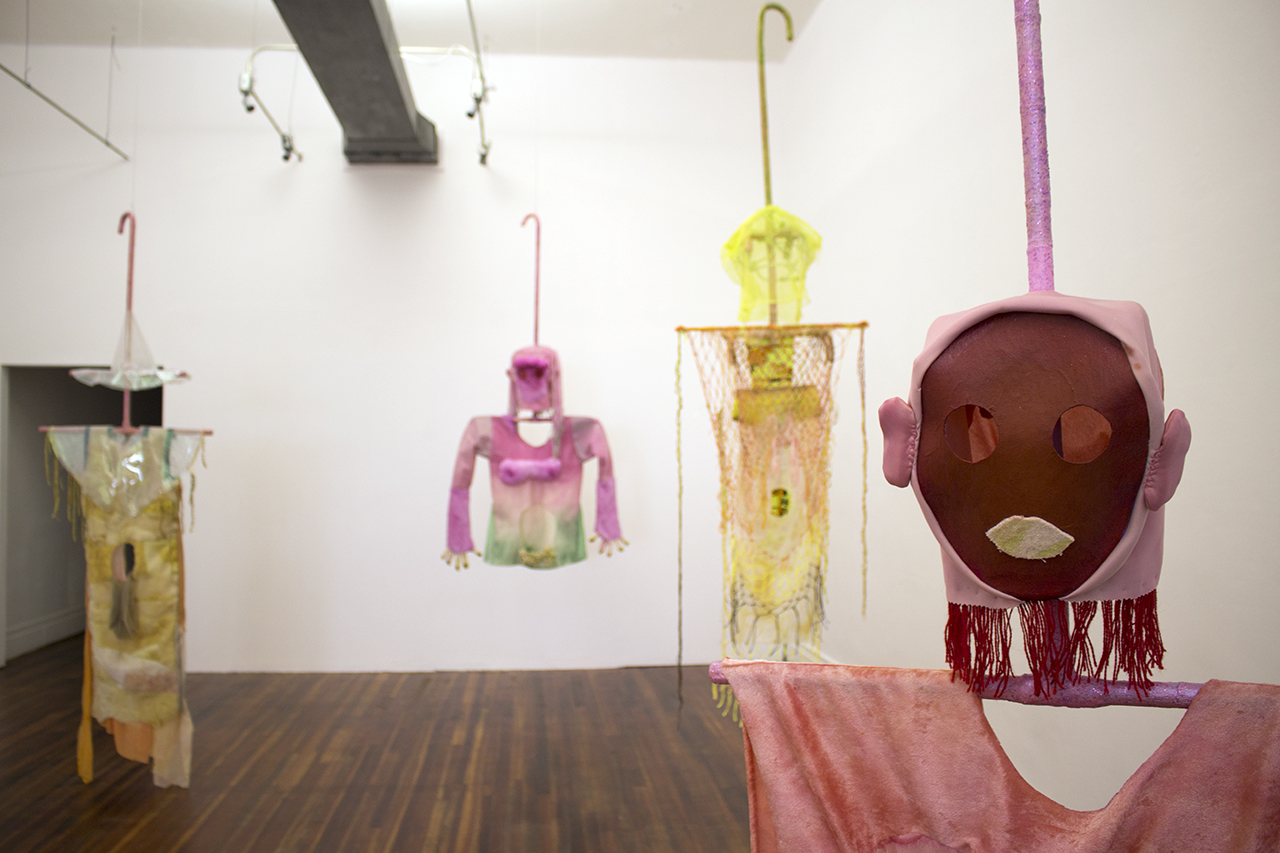
Parahuman Suit (by: Kristen Sanders)
A suit that is part prehistoric ancestor and part sci-fi babe, this outfit creates a character that circles around the human. It examines consent and birth when humanness is pushed beyond, pulling from the stories of two human women are are each annunciated with a parahuman - Lilith from Octavia Butler’s Lilith’s Brood and the Virgin Mary from Christian mythology. The body plate shields while the clear stomach reveals.
READY - TO - WEARS

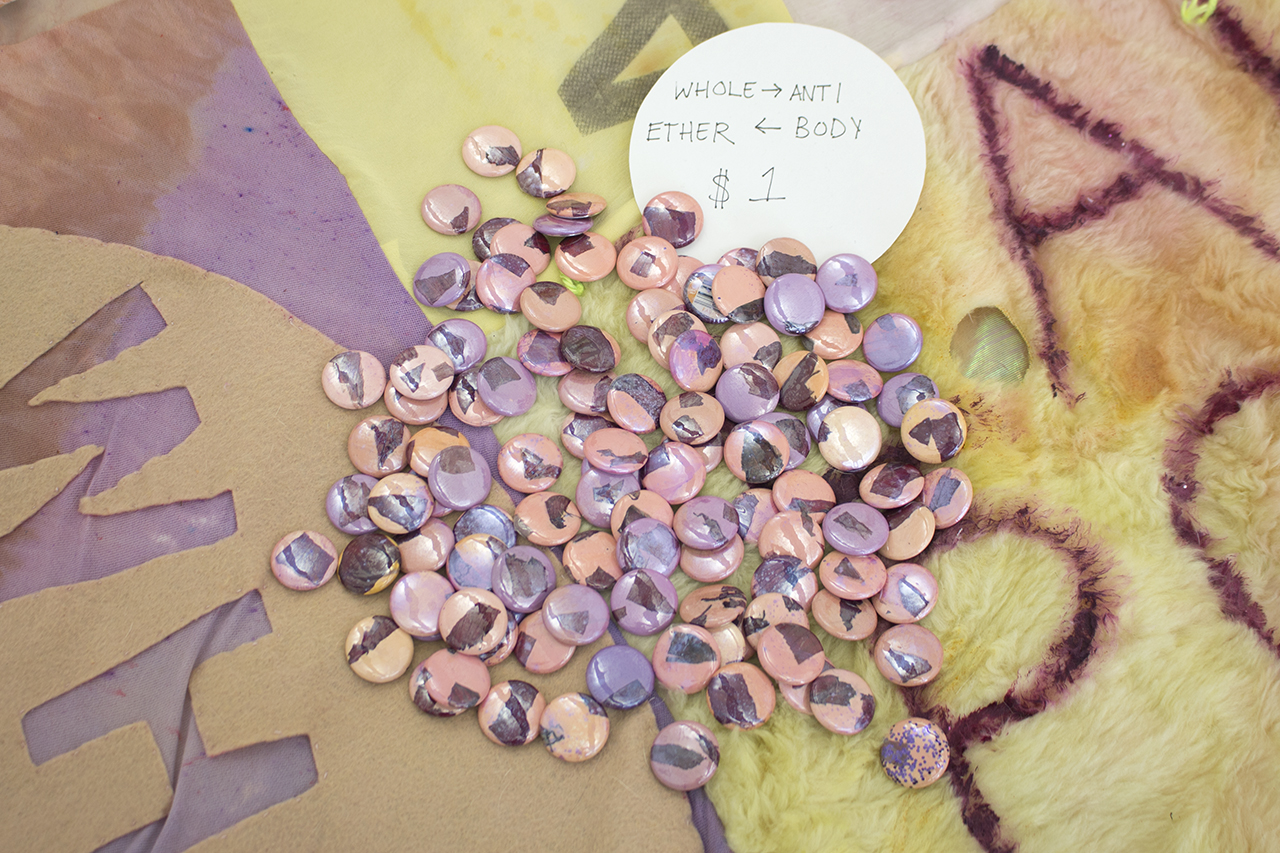
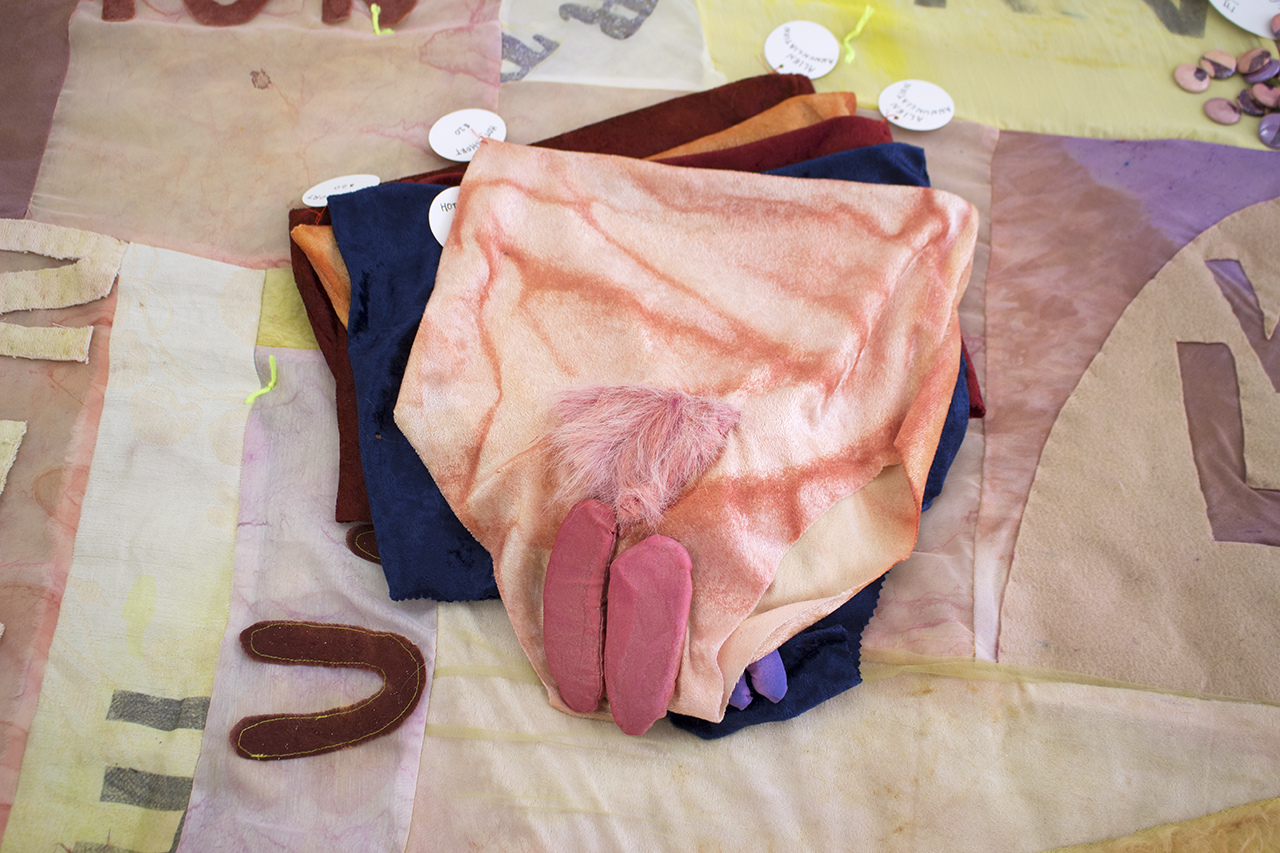

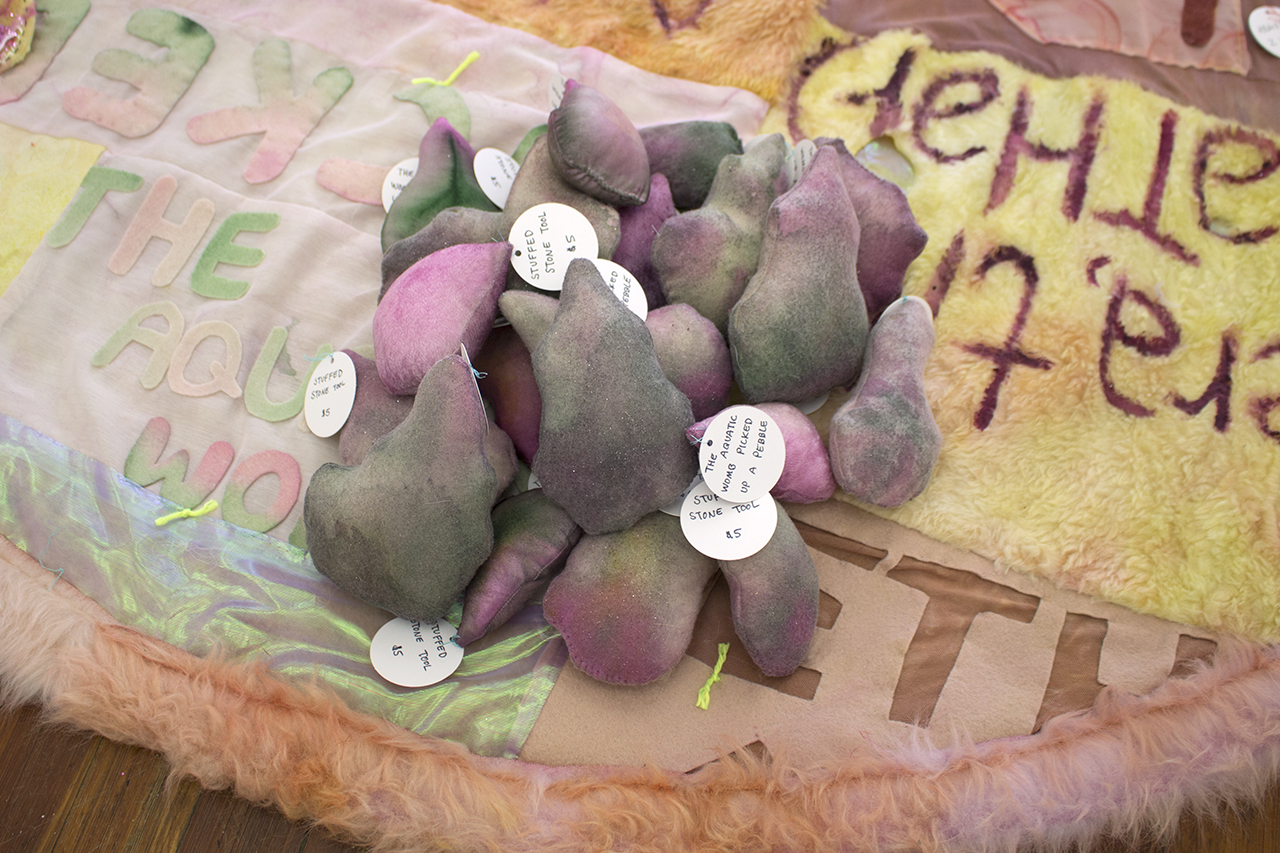
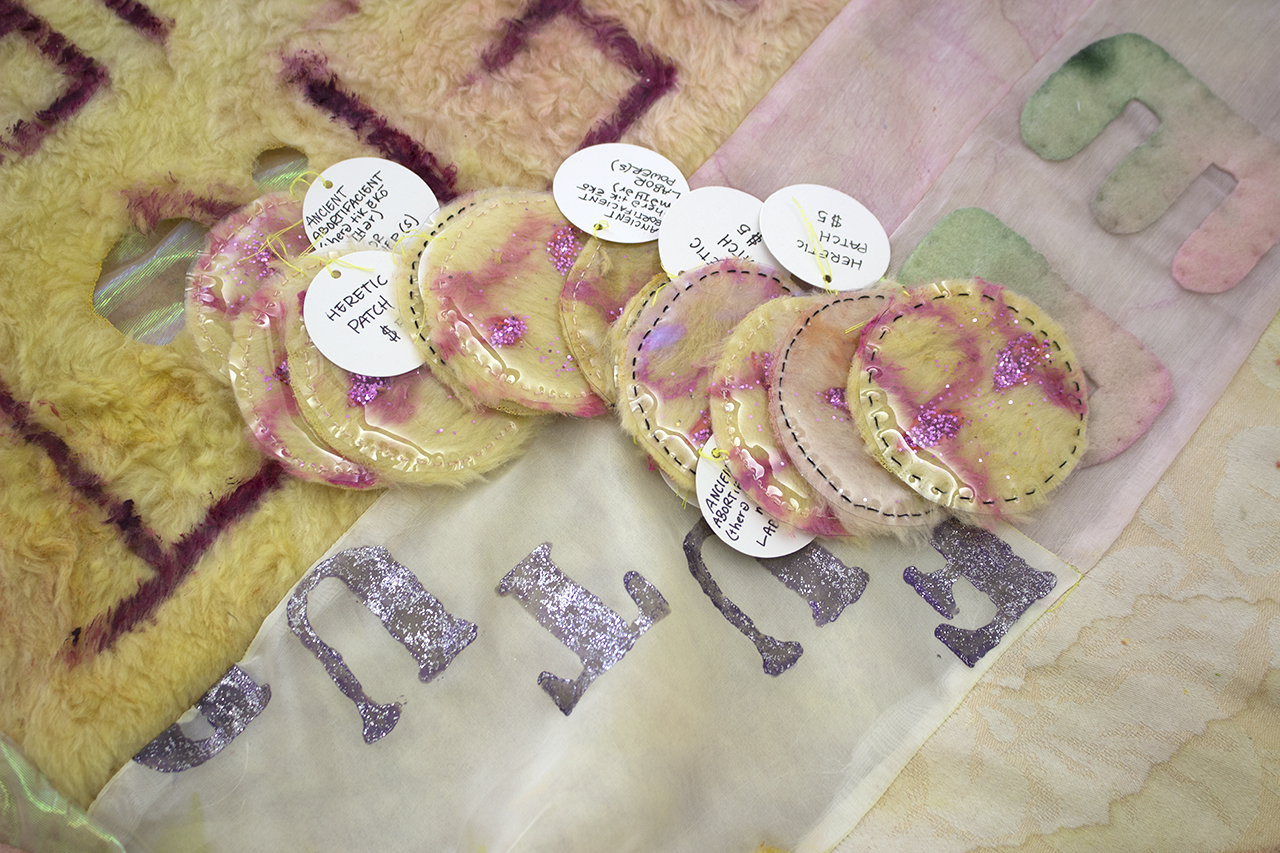

AT SEDIMENT:
